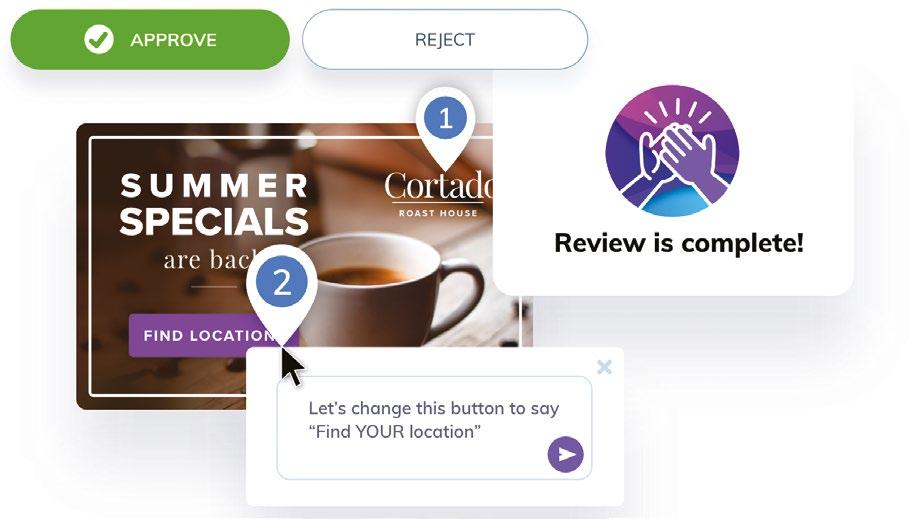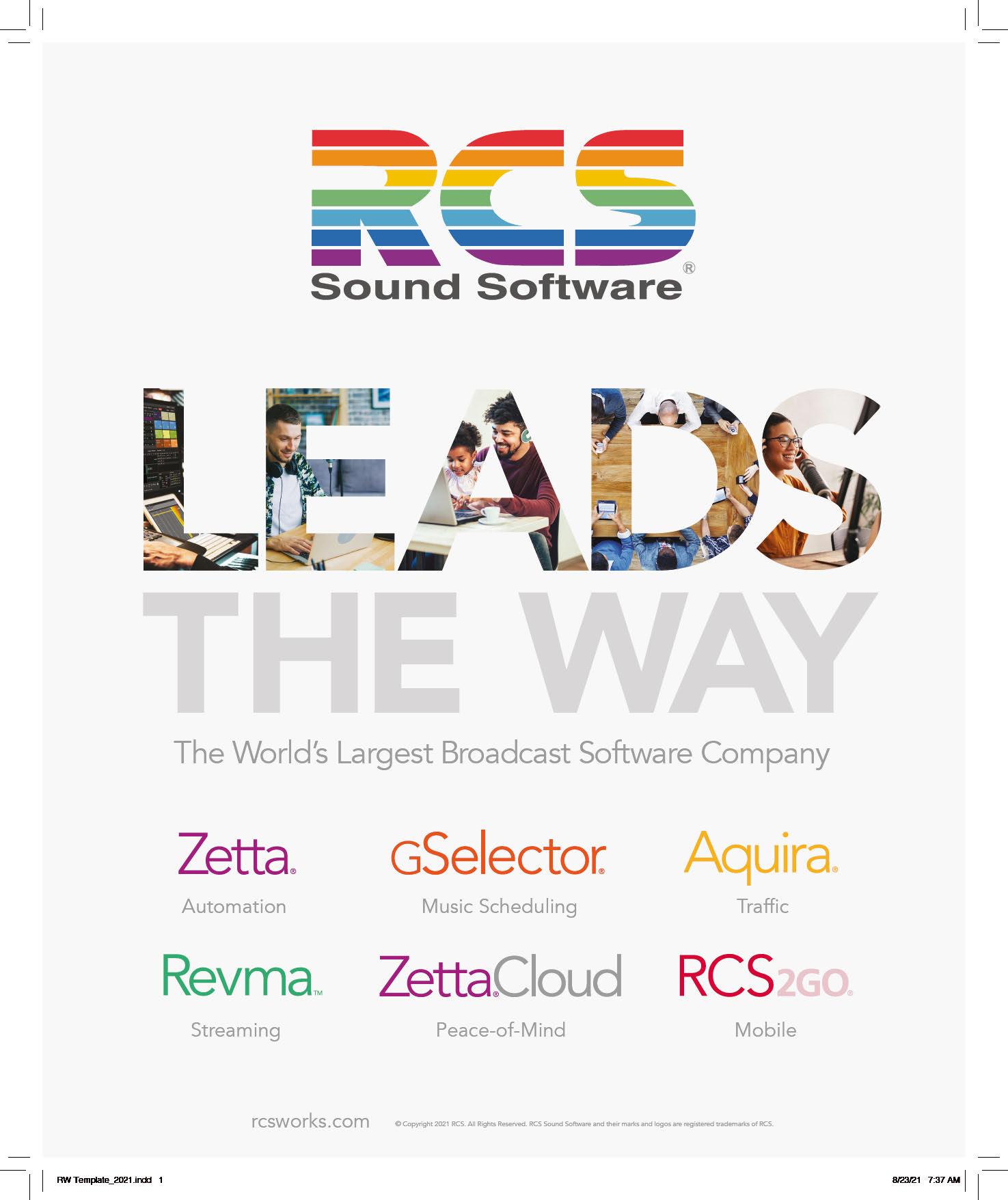
82 minute read
Readers Forum
Layer from the NAB. David is working with the WorldDAB In-Car User Experience Group, which includes both broadcasters and automotive companies and has developed guidelines focusing on DAB radios.
Many of their recommendations apply to the North American market and provide some good lessons learned, but North America also has some unique aspects. The NABA In-Car User Experience Group will focus on getting those documented — for example, a strong requirement for local focus and a mix of analog and digital product — and built into recommendations for automakers supplying the North American market.
Obviously, there is great collaboration between the two NABA working groups, which is why our session at the NAB Show will combine presentations from both areas to update the broadcast community about where we are in this process. Our session will be chaired by Jeff Detweiler and feature presentations from David Layer, Joe D’Angelo from Xperi, Ben Husmann from Quu Interactive and others.
What key factors will change the dashboard environment even more than it already has? Thinking here about passenger video, Android Automotive, hybrid radio or anything else that may make today’s electronic screens seem simple.
McEwen: That is the challenge, isn’t it? Our interests are focused on keeping things as simple and straightforward as possible. And of course, safe. These services should enhance the audio experience, not clutter it, and our advice to the automotive and broadcast communities will be exactly that. But won’t it be wonderful that, with a hybrid radio, you can listen to your local station even as your transmitted signal fades and the radio automatically switches to that signal streaming over the internet. Nice.
How would you characterize the success to date of broadcasters at working with carmakers and other stakeholders, to assure radio’s place in the next generation of high-tech dashboards?
McEwen: I think the automotive community wants our input and ideas. They also want their product to have a successful market take-up in North America.
By working together, we can create an orderly transition to new technology that enhances the audio experience and start realizing the benefits of 21st century technology in car dashboards. We all have an interest in making this happen.
What would you want someone who couldn’t attend the session to know, as your main point?
“It’s important
that as these services mature, they do so in a way that reinforces the core of any system’s audio offering: traditional radio from
McEwen: This is a progress report on where we are in the development and services enabled by advanced technology in the car dashboard. Our local AM and FM transmitters. ” industry needs to be aware of how quickly things are moving, and they also need to engage with the process and prepare their station(s) to provide services and content that enhanced capabilities will provide. This is very much “a work in progress” and it hasn’t been made easier by the pandemic. But the speed of our work will pick up as we move to the new normal and as product becomes available to the market. Broadcasters need to be ready.
Introducing:
1200 Series Low Power FM Panel Antenna
• Low power unpressurized FM panel antenna • Tunable to any single FM channel 88.1 MHz to 107.9 MHz • Circularly polarized cross dipole design with integrated power divider and phasing loop • Lightweight and ruggedly constructed • Includes feed point covers for protection from rain, ice, and snow • Includes reflector screen and mounting brackets • Directional arrays available
www.eriinc.com • (812) 925-6000
Writer
Phil Owens
Sales engineer, Wheatstone
Appliance or cloud-based app?
What will the future of broadcast engineering be?
In person
The author will present the session “App vs. App (Application vs. Appliance)” at the NAB Broadcast Engineering & IT conference.
Below
Utility mixers in Wheatstone’s I/O Blades are routable on the AoIP network, a step toward the app model discussed in the article.
W
e seem to be headed down two tracks on our way to the broadcast facility of the future. One is the appliance track, where we are migrating away from the model of apps running on a Windows PC and moving functions instead onto one dedicated appliance that isn’t subject to the finicky PC.
These are generally specialized AoIP or automation appliances that are Linux-based and therefore do not require Windows drivers, updates or PCs. Good examples are streaming appliances like Streamblade or Wheatstream that replace multiple PCs by putting everything streaming related into one AoIP Linux appliance.
The other is the app track, which takes us to the cloud and away from hardware in the rack room.
Here, we are offloading functions to the cloud where they can be remotely reconfigured, maintained and provisioned on a case-by-case basis. At its most ideal, centralized cloud-based applications will give us the ability to dial up encoding, IFB, routing, mixing, playback and even the kind of console needed for a given show or operator skill level.
Wheatstone, Xperi and other broadcast product makers are working on cloud-based apps using cloud technologies such as container platforms like Docker that will make it possible to transition from the entirely fixed-location studio to a more virtual operation.
Already, many of these apps exist. We know of broadcasters who are containing audio drivers in a virtual machine onsite in preparation of eventually offloading that part of their operation to the cloud and others who are putting multiple studio workflows from multiple locations in a one-stop virtual interface.
Moving it all to the cloud can downsize space requirements in the rack room and shift engineering management to an offsite provider. Eliminating any piece of gear in the air chain along with its connectors and potential points of failure is a good thing, and that goes for specialized appliances too, because these can replace more generic PC-based functions and also reduce space requirements and engineering management.
Coexistence
There are advantages and disadvantages of both the cloudbased app model and the appliance model.
Offloading functions to Microsoft, Amazon or other cloud provider takes away the cost and upkeep of hardware in the rack room but leaves you subject to third-party vulnerabilities. On the other track, having an appliance onsite gives you some of the consolidation benefits of an all-in-one rack unit similar to the cloud model, although at the additional expense of on-premise infrastructure and upkeep.
It doesn’t have to be one way or another, fortunately. There are many different ways to divide and subdivide that signal chain between functions in the cloud and functions onsite in an appliance.
For example, it’s possible to have automation and mixing functions in the cloud but maintain control from a local virtual or hardware interface. If your playback is being done mostly off a cloud server, you might have a virtual control surface in the studio that is talking to a mix engine in the cloud. Similarly, you could also be receiving your mic audio from a codec that’s in the cloud. More likely, the broadcast facility of the future will use a combination of both: appliances for consolidating functions into a single 1RU box that eliminates a bank of Windows PCs yet the use of cloud for shared mixing, routing or removes streaming and automation without the real estate, upkeep and of the Windows PC. We’ll likely arrive at the future broadcast facility from both tracks, and not entirely from one or the other.
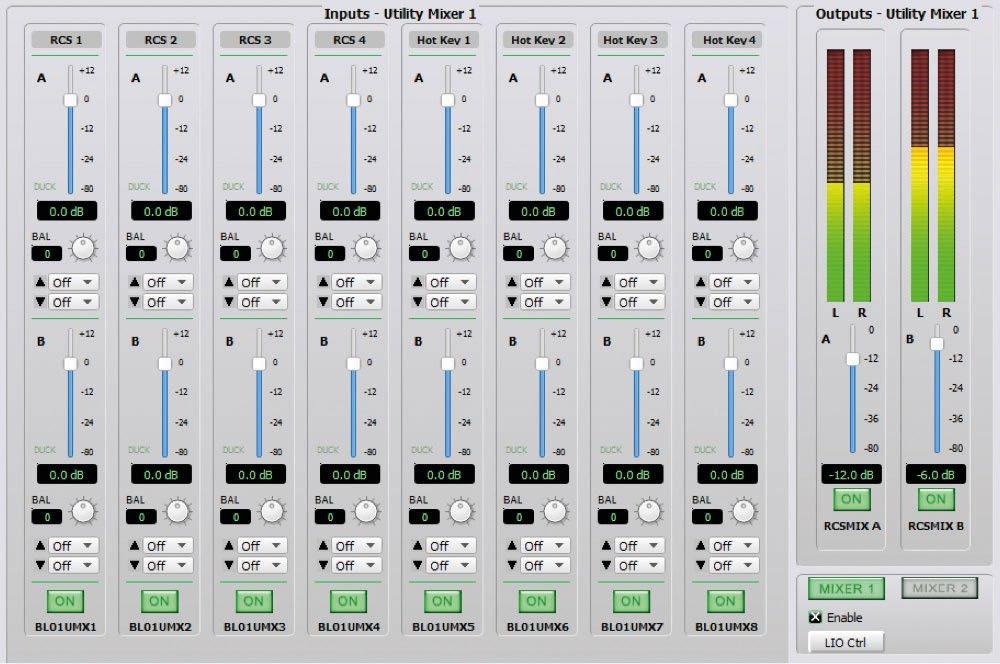
NAB Show Booth List
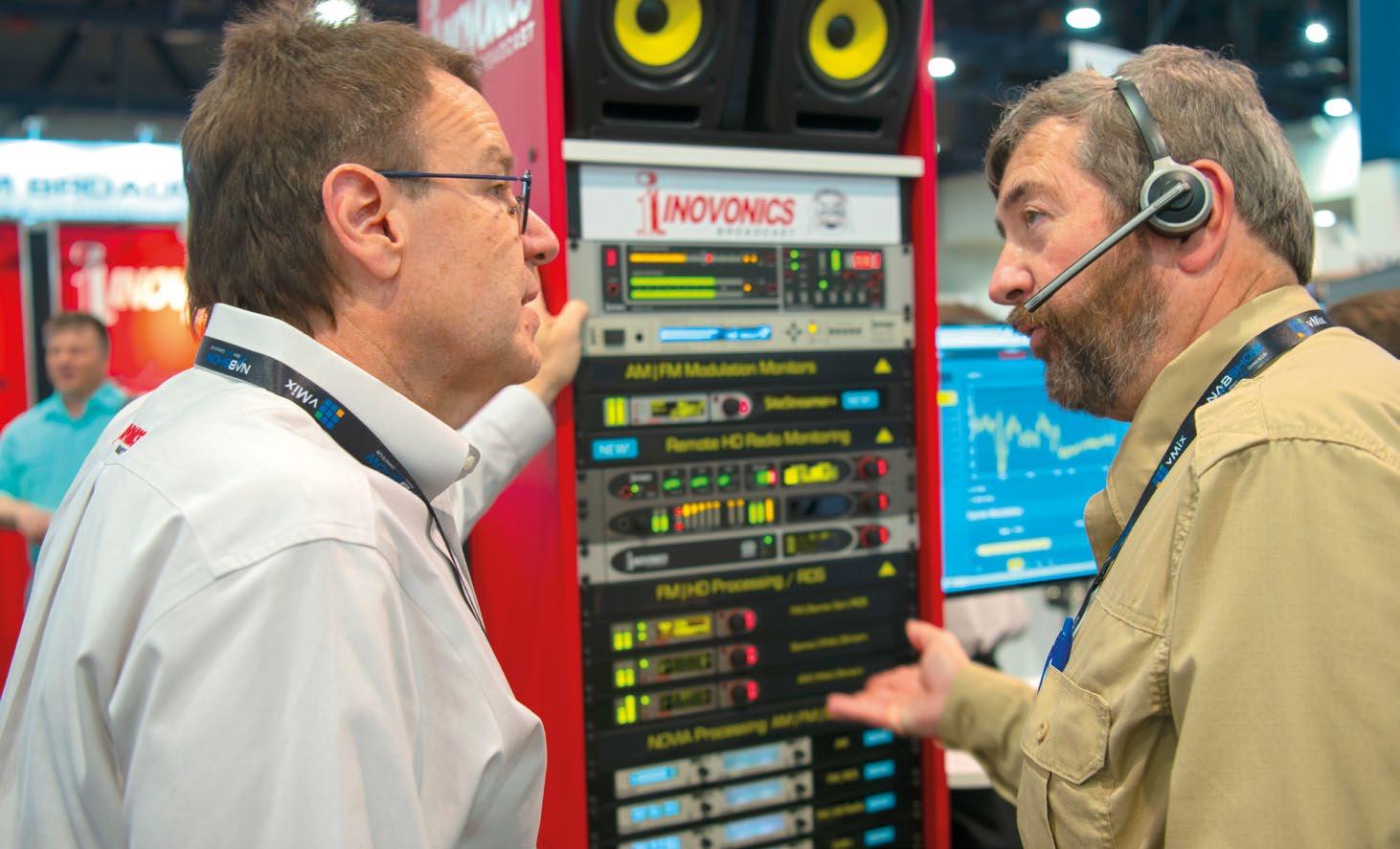
A sampling of companies of interest to Radio World readers
Exhibit Hours
Sunday Oct. 10
10 a.m.–6 p.m.
Monday Oct. 11
9 a.m.–6 p.m.
Tuesday Oct. 12
9 a.m.–6 p.m.
Wednesday Oct. 13
9 a.m.–2 p.m. For a complete show list and map, see https://nabshow. com/2021/attend/exhibits/.
Photo by Jim Peck
Company
Booth
AEQ S.A. C3651 Aldena Telecomunicazioni s.r.l. C7625 Altronic Research Inc. N4035 Amazon Web Services C1707 American Radio Relay Lg. (ARRL) LN1 Arrakis Systems N3831 Associated Press/AP ENPS C6113 Audacy Encore Parlor - C AudioScience Inc. N3834
Audio-Technica U.S. Inc.
C8815 Barix C2739 Blubrry Podcasting by RawVoice N4039
Company
Blue Elements Bonneville Distribution Broadcast Pix Broadcasters General Store Calrec Audio Ltd. Clark Wire & Cable Clear-Com Comrex Continental Electronics Corp. CPI Dalet Dan Dugan Sound Design Inc. Delta Meccanica s.r.l DH Antenna Dialight Corp. Dielectric DiGiCo Digital Alert Systems Digital Broadcast DJB Software Inc./DJBRadio Electro-Voice
Booth C1754 W285 N619 C6915 C8008 C4809 C6608 C6116 C3246 N2931, C3205 C5625 C9521 N3738 SV1000 C1736 C7125 C8008 C4249 C3637 N2636 C5508
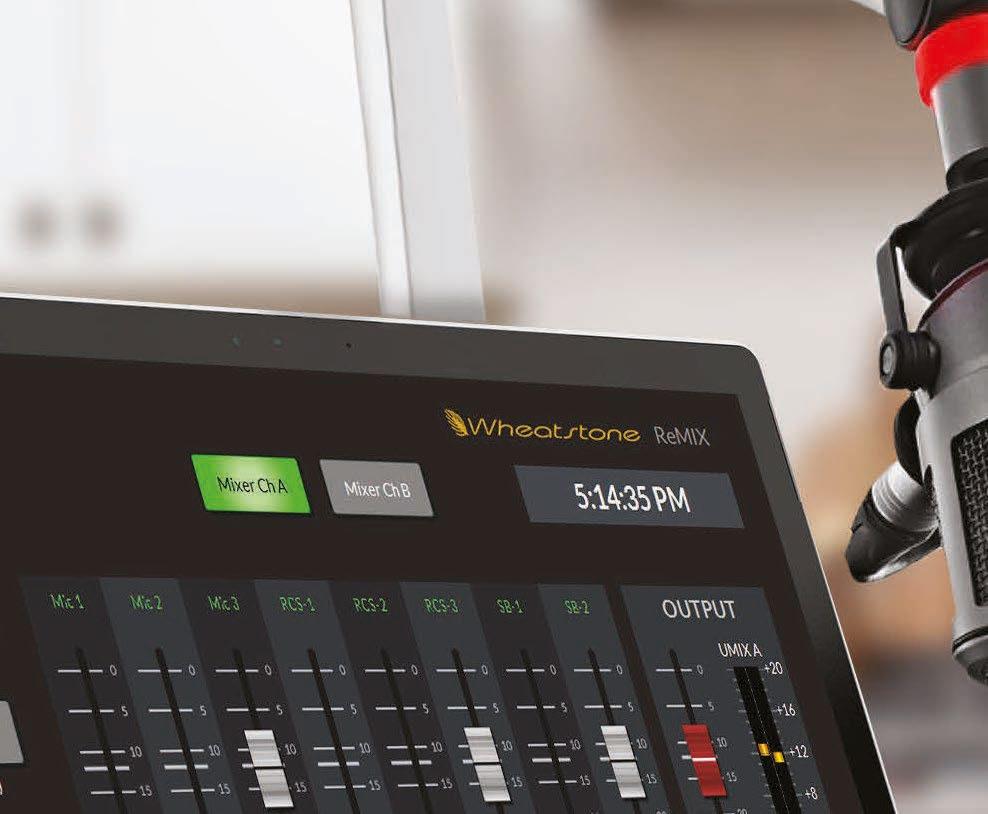
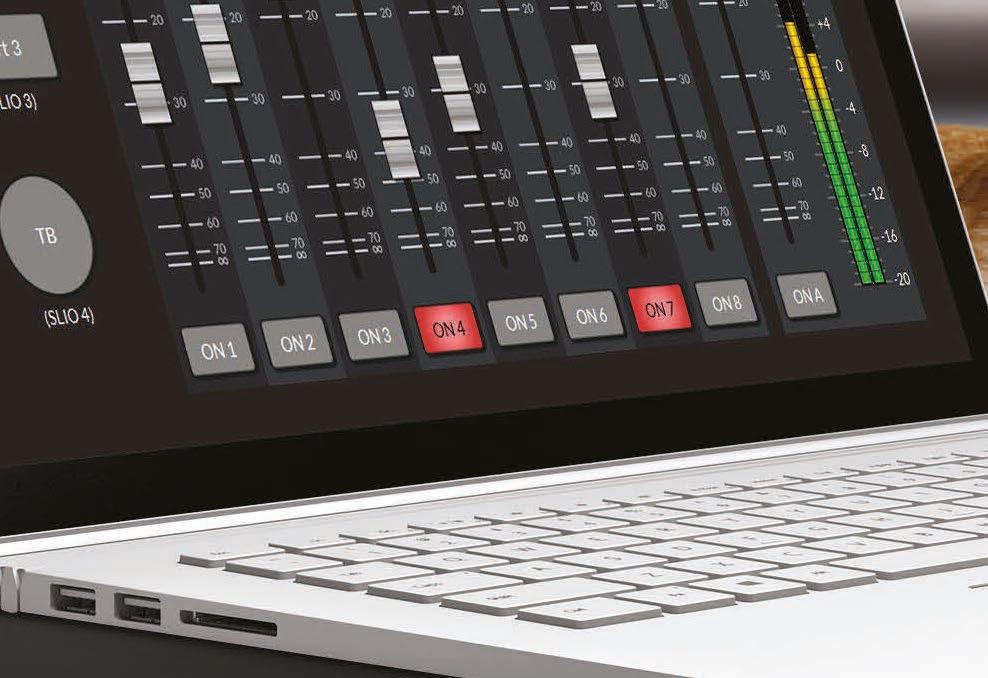
IT’S ALL IN WHEATNET-IP THE INTELLIGENT NETWORK
SET UP A HOME STUDIO IN MINUTES
Our software (and hardware) solutions provide intuitive tools to let you work from home seamlessly, with minimal setup.

REMOTE SOLUTIONS
Learn more: wheatstone.com/remote-solutions-rw21a
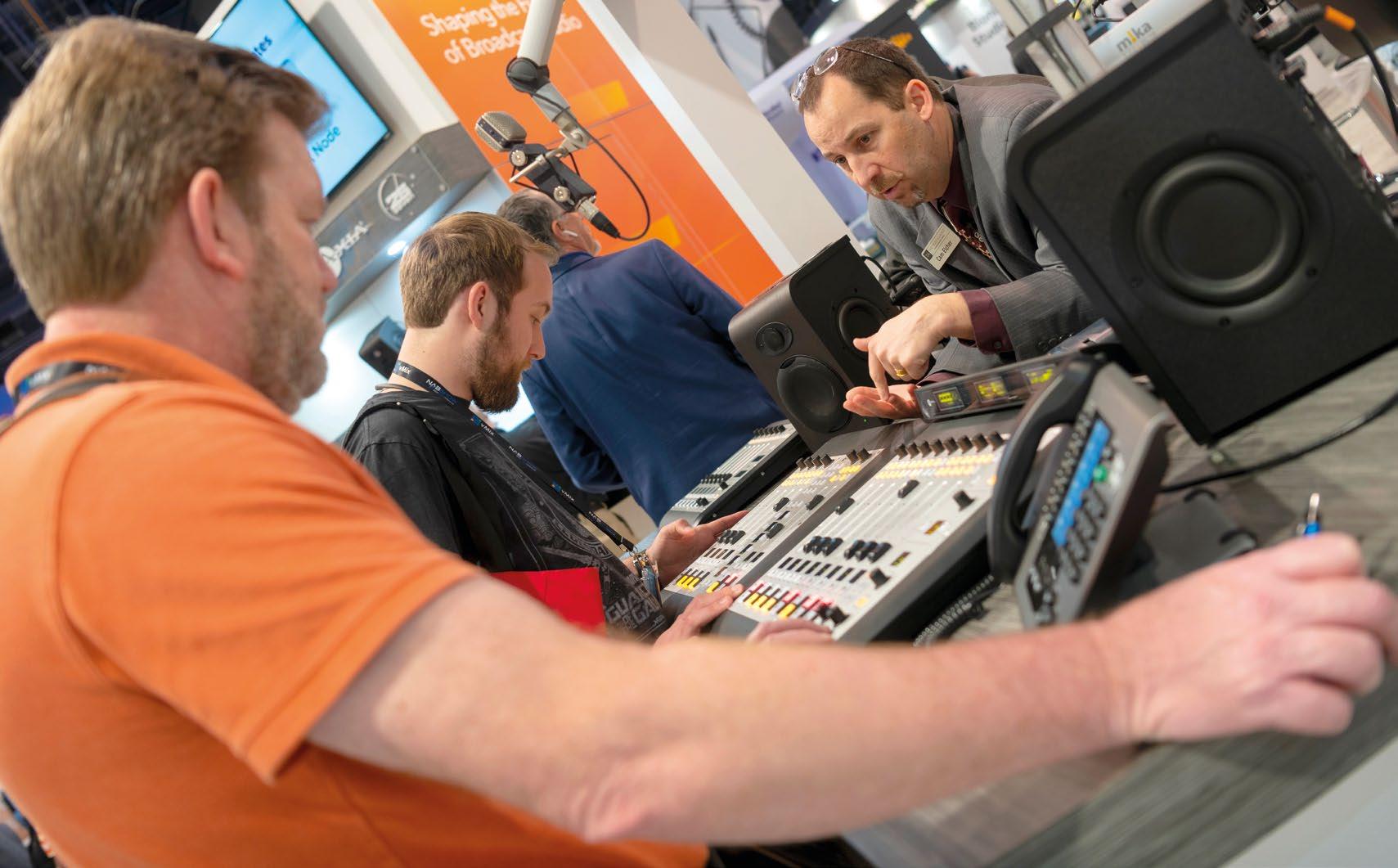
Company
Booth
ENCO Systems Inc. N4631 ERI-Electronics Research Inc. C5630, Westgate A Eventide Inc. N2533 FEMA IPAWS C1836 Flash Technology C8819 Fraunhofer-Gesellschaft C3018 Futures Park Welcome Desk N7416 Futuri Encore Salon - F GatesAir N3131 Glensound (UK) C6906 IABM N110LMR IEEE Broadcast Technology Society LN3 Independent Audio Inc. C5516 Inovonics Inc. N4431 Intelsat US LLC C3621 Jampro Antennas Inc. C5721 JDA.media W181 Kathrein Broadcast USA Inc. C6130 Katz Media Group Encore Salon - G Kintronic Laboratories Inc. N5631 Lawo AG C6108 Live365 N4138 Logitek Electronic Systems C6316 Lynx Technik AG C6619 Marketron Encore Salon - C Moseley Associates Inc. N2531 Multicam Systems N4806 MusicMaster N4636 Myat Inc. C8240 NAB Leadership Foundation LNU1 Nagra C6150MR
Photo by Jim Peck
Why do broadcasters love Bext antennas? Why do broadcasters love Bext antennas? Performance, Customer Service and Sturdiness, explained this way by a Bext customer: Why do broadcasters love Bext antennas? Performance, Customer Service and Sturdiness, explained this way Why do broadcasters love Bext antennas? Performance, Customer Service Performance, Customer Service by a Bext customer: and Sturdiness, explained this way and Sturdiness, explained this way by a Bext customer: by a Bext customer:
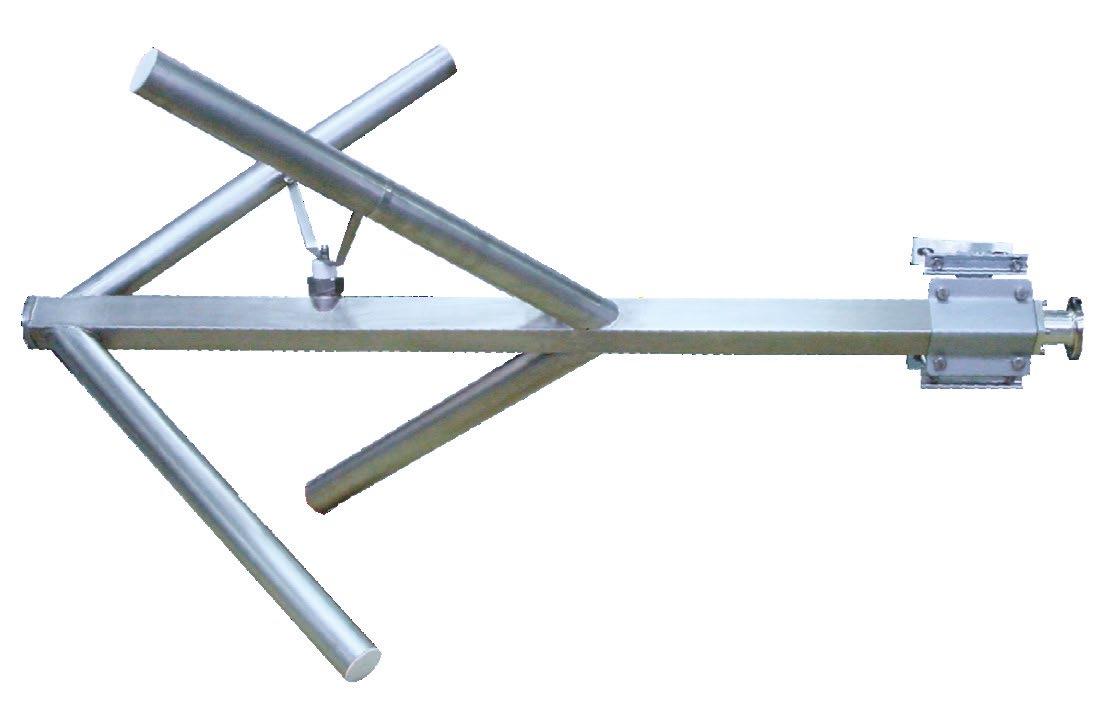
“I love Bext Antennas. Its high-power TFC2K* model is built so sturdy and seems virtually unbreakable. We trust those for our stations located in hurricane-prone areas”. bext.com DAVID HOXENG, ADX888 239 8462 Communications, Pensacola, Florida
“I love Bext Antennas. Its high-power TFC2K* model is built “I love Bext Antennas. so sturdy and seems virtually unbreakable. We trust those for our stations located in hurricane-prone areas”. DAVID HOXENG, ADX Communications, Pensacola, Florida Its high-power TFC2K* model is built so sturdy and seems virtually unbreakable. We trust those for our stations located in hurricane-prone areas”. “I love Bext Antennas. Its high-power TFC2K* model is built so sturdy and seems virtually unbreakable. We trust those for our stations located * TFC2K arrays can be rated up to 75 kW power handling. DAVID HOXENG, ADX Communications, Pensacola, Florida in hurricane-prone areas”. * TFC2K arrays can be rated up to 75 kW power handling. DAVID HOXENG, ADX Communications, Pensacola, Florida
* TFC2K arrays can be rated up to 75 kW power handling. * TFC2K arrays can be rated up to 75 kW power handling.bext.com 888 239 8462 bext.com 888 239 8462 bext.com
Company
NATE Nautel
Booth
C7525 N3431
Neutrik USA Inc.
C5718 NPR Distribution Services C1339 OMB Sistemas Electrónicos S.A. N5931 Orban Labs Inc. N2534 Paravel Systems N3137 PILOT N7520 Radio Act N2538 Radio Design Labs N6531 RadioFX Inc. W295 RadioMax W295 RCS N5231 RF Specialties N3938 Rohde & Schwarz N1815 RTW C7712 Rymsa RF C6117 Sabre Towers & Poles N2836 Sennheiser Electronic Corp. C6613 SES Ren VIP - A Shively Labs N4331 Shure Incorporated C5225 Sierra Automated Systems & Eng. N3731 SixArms C7628 Solid State Logic Inc. C8008 Sonifex Ltd. C5515 Sound Ideas Music & Sound Effects N3714 SoundExchange N3237 Staco Energy Products Company N3428 Stainless C8140 StreamGeeks N4219 Superior Electric N2937 SWR LP C6706 Thermo Bond Buildings, LLC N4135 Thermodyne Cases C6621 Tieline N5235 TSL Products C6721 Vertical Bridge Wynn Parlor - A VocalBooth.com Inc. N5522 V-SOFT Communications, LLC N2934 Wheatstone Corporation N2631 WideOrbit N3238, Encore D WireCAD C1730 WorldCast Systems C3916 XPERI / HD Radio / DTS N6231 Yellowtec GmbH N4635
Orban Releases XPN-Enterprise New Features From WorldCast
Orban announced initial deliveries of XPN-Enterprise.
“This Linux-based system is an easy-to-use, customizable processing platform for multiple broadcast stations or streaming services, with centralized control.”
It provides Orban OptiCloud processing for up to 16 FM/HD/DAB+ and streaming processing channels in a 1 RU package, using an enterprise-class SoftGear server and the appropriate Optimod XPN-Enterprise Nodes.
President David Day said XPN-Enterprise is suitable for broadcasters who need high density and are managing multiple signals, in an age when more operations are moving to centralization and virtualization.
Content to be processed is brought to one location via AES3, AES-67, SMPTE-2110-30, Dante or Livewire+. The system then creates the necessary outputs (FM composite, DMPX, uMPX and DAB+HD) using the appropriate Orban XPN-Enterprise Nodes for distribution to each transmitter site.
Processed channels intended for streaming are handled by the XPNEnterprise softGear server, which sends those outputs to the appropriate streaming devices.
Each signal coming into the Optimod XPN-Enterprise server can be individually processed. OptiCloud presets give users a quick start for each format. “Less-More” controls simplify “dialing in” the desired sound by combining multiple processing parameters with a handful of controls. Kantar or Nielsen watermarking for each broadcast channel is provided via the appropriate node.

Info: https://orban.com APT codecs from WorldCast Systems recently got an upgrade. The announcement applies to APT IP, AoIP Multichannel and MPX Multichannel codecs. According to the announcement, System Release 4.0 adds APTmpX, a nondestructive MPX/composite signal compression algorithm that should save network bandwidth without compromising signal quality.
Also new is SynchroStream technology, which is intended for “precise and stable time-synchronous IP transmission and playout of audio content.” It synchronizes multiple transmitters used in a single-frequency network with use of an external 10 MHz clock.
Both are available as software options.
Other additions include NAT transversal connection mode for assuring codec connections, and NTP content-alignment for coordinating programming across a multi-frequency network by using IP packet time stamps.

Info: www.worldcastsystems.com
Used AM Transmitters 50 KW 1999 Harris DX50, solid state 55W 2000 Harris DIGIT CD, 1-phase 2006 Harris 3DX50, solid state 3 to 10KW 2007 Harris Z16HD,FM/Dig solid state 50 KW Exciters & Miscellaneous Equipment 10 KW 10 KW 20 KW 25 KW 1995 Nautel FM10 Harris DIGIT CD Exciter--$2,990.00 2004 Harris Z10CD, solid state Bird Model 8932, 10 kW air-cooled RF Load 2005 BE FM20T 2004 Harris HT25CD New TV Transmitters- DTV & AT OMB and Technalogix Used AM Transmitters 1 KW 2005 Nautel J1000 Used DTV & ATV Transmitters 1KW 2016 BE AM1A **Rohde & Schwarz** 1KW 2013 Armstrong X1000 **Harris Platinum* 5 KW 2004 Gates Air DAX5 5 KW 2015 Gates Air DAX5 Nautel XR6 Nautel ND10 Nautel XL12
TRANSCOM CORPORATION 2006 Harris 3DX50, solid state55W 2000 Harris DIGIT CD, 1-phase 3 to 10KW 2007 Harris Z16HD,FM/Dig solid state Serving the Broadcast Industry Since 1978
Transmitters and Broadcast Equipment for Radio & Television
6 KW 10 KW 2016 1997 Please visit our website, www.fmamtv.com, 12 KW 2000 for additional listings. 12 KW 2001 Nautel XL12
50 KW Exciters & Miscellaneous Equipment 10 KW 10 KW 20 KW 25 KW
1995 Nautel FM10 Harris DIGIT CD Exciter--$2,990.00 2004 Harris Z10CD, solid state Bird Model 8932, 10 kW air-cooled RF Load 2005 BE FM20T 2004 Harris HT25CD New TV Transmitters- DTV & AT OMB and Technalogix Used AM Transmitters 1 KW 2005 Nautel J1000 Used DTV & ATV Transmitters 1KW 2016 BE AM1A **Rohde & Schwarz** 1KW 2013 Armstrong X1000 **Harris Platinum* 5 KW 2004 Gates Air DAX5 5 KW 2015 Gates Air DAX5 Nautel XR6 Nautel ND10 Nautel XL12
Used AM Transmitters 50 KW 1999 Harris DX50, solid state 55W 2000 Harris DIGIT CD, 1-phase 2006 Harris 3DX50, solid state 3 to 10KW 2007 Harris Z16HD,FM/Dig solid state 6 KW 10 KW 2016 1997 Please visit our website, www.fmamtv.com, 12 KW 2000 for additional listings. 12 KW 2001 Nautel XL12
50 KW Exciters & Miscellaneous Equipment 10 KW 10 KW 20 KW 25 KW
1995 Nautel FM10 Harris DIGIT CD Exciter--$2,990.00 2004 Harris Z10CD, solid state Bird Model 8932, 10 kW air-cooled RF Load 2005 BE FM20T 2004 Harris HT25CD New TV Transmitters- DTV & AT OMB and Technalogix Used AM Transmitters 1 KW 2005 Nautel J1000 Used DTV & ATV Transmitters 1KW 2016 BE AM1A **Rohde & Schwarz** 1KW 2013 Armstrong X1000 **Harris Platinum* 5 KW 2004 Gates Air DAX5 5 KW 2015 Gates Air DAX5 Nautel XR6 Nautel ND10 Nautel XL12
Transmitters and Broadcast Equipment for Radio & Television TRANSCOM CORPORATION Serving the Broadcast Industry Since 1978 Transmitters and Broadcast Equipment for Radio & Television Used FM Transmitters
55W Harris Digit 150W Crown & Technalogix 10KW Nautel FM10 20 KW BE FM20T 25 KW Harris HT25CD
Used AM Transmitters
50 KW Harris DX50 50 KW Nautel XR50 12 KW 10KW 6 KW 10 KW 2016 1997 Nautel XL12 Nautel ND10 Please visit our website, www.fmamtv.com, 5KW 1 KW 12 KW 12 KW 2000 2001 GatesAir DAX5 Nautel & BE Nautel XL12 for additional listings.
Miscellaneous Equipment
Burk ARC Plus/PlusX ICRU ARC Plus Touch/PlusX IIU Inovonics 531 Mod Monitor
New TV Transmitters- DTV & ATV
OMB and Technalogix
Used DTV & ATV Transmitters
**Rohde & Schwarz** **Harris Platinum**
Please visit our website, www.fmamtv.com, for additional listings.
HARRISHARRISHARRIS
Email: transcom@fmamtv.com • Phone: 215-938-7304 Email: transcom@fmamtv.com • Phone: 215-938-7304 P.O. Box 26744, Elkins Park, PA 19027 RETUNING & TESTING AVAILABLE CALL US FOR A QUOTE! Email: transcom@fmamtv.com • Phone: 215-938-7304 P.O. Box 26744, Elkins Park, PA 19027 Email: transcom@fmamtv.com • Phone: 215-938-7304 P.O. Box 26744, Elkins Park, PA 19027 P.O. Box 26744, Elkins Park, PA 19027 RETUNING & TESTING AVAILABLE • CALL US FOR A QUOTE!


By: Circuit Research Labs, Inc.
920 Edison Ave. Ste. 4, Benton, AR 72015
We repair all older models of Orban Optimod Audio Processing We are an Authorized Orban New Products Dealer and We accept all Orban Processors as trade-ins (any condition) Sales: Jay Brentlinger
480-747-5330 | Jay@Orbanlegacy.com Service: Robert Leebruggen
501-650-8453 | Robert@Orbanlegacy.com
New Product Dealer Orban Optimods Service & Parts for all Older Orban Models 8100/8200/8300/8400/9000/9200/6200
Equipment lifespans
Excellent article in Radio World by Mark Persons (“Analog veterans in the digital world,” May 12 issue).
Count me among those who started out in the analog world but quickly became “digitally native.” I would be hard-pressed to recommend a new analog buildout these days, even for smaller stations. It just makes so much sense and is so much easier to make changes after the fact.
The biggest drawback is that unfortunately, digital equipment does tend to have a shorter lifespan than analog, simply because of the rapid pace of technology improvements, and often quicker part obsolescence. Lifespans of 10 to 20 years for some equipment have now become more like five to 10, or three to five, not because it has failed but because technology has improved.
That said, in some cases the labor saved in maintenance and ongoing changes can often offset some of this cost. It’s just something that needs to be budgeted for, much like upgrades to desktop computing technology.

Magictorch/Getty Images
Shane Toven Educational Media Foundation
Yes, mics matter in ratings
A nice collection of comments about mics in the May 26 issue (“Today’s microphones offer a buffet of choices”).
But I have a comment about the quote in the first piece that “No radio station ratings have ever been tied to the mic used in the studio.”
I wholeheartedly disagree. If you ask a listener, they’re not going to flat out tell you that they love a station’s compressor, particular jingle, studio, microphone or one particular recording. They How to submit
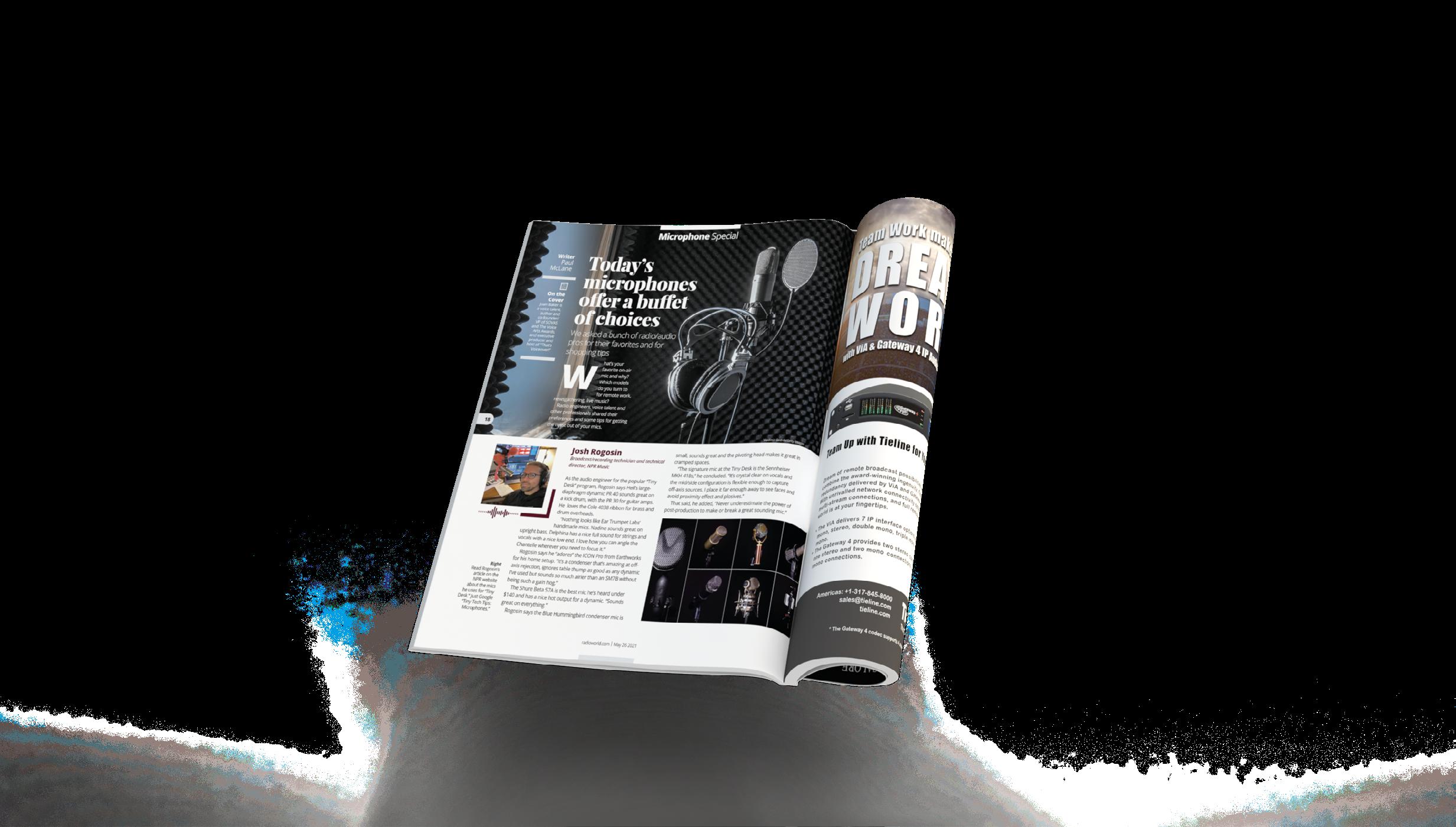
Radio World welcomes comment on all relevant topics. Email radioworld@ futurenet.com with “Letter to the Editor” in the subject field. only know what they hear, and it’s generally without being analytical.
Whatever that mystique is that makes one station sound better than another certainly contributes to why the station is a favorite.
Every element is a little percentage point towards making a station number one. And it’s like dominoes. You break the chain and the result will disproportionately affect the outcome.
As they say, “The chain is only as strong as the weakest link.” The secret of being a number one station is doing all those little percents the right way; but with the microphone it’s a lot more than 1%. It’s the product that the listener hears upon which they make their preference judgments.
Comparing the quality of the air sound to the budget of whether you can use the microphone as a hammer and evaluating the choice of what to purchase is just plain outrageous.
I am often reminded of the quote by Ken Levine, a former DJ with us at a couple of L.A. stations and writer, director and producer for “M*A*S*H,” “Frasier” and “Cheers”: “Enough is a feast to an idiot.” And that’s exactly the mid ground “rollover and play dead” mentality of stations that just sound mediocre. It is super easy to beat them in the ratings because I maintain that the listener most certainly can tell the difference. Of course personality factors into it as well, but put the same personality on a station that is superior in these other elements we are discussing, and it’s a slam dunk that they will have an edge. No details and listeners don’t really ever know why — except “It just sounds better.”
Don Eliot
The author is a veteran voice talent and owner of Schwab MultiMedia in Hollywood, Calif.
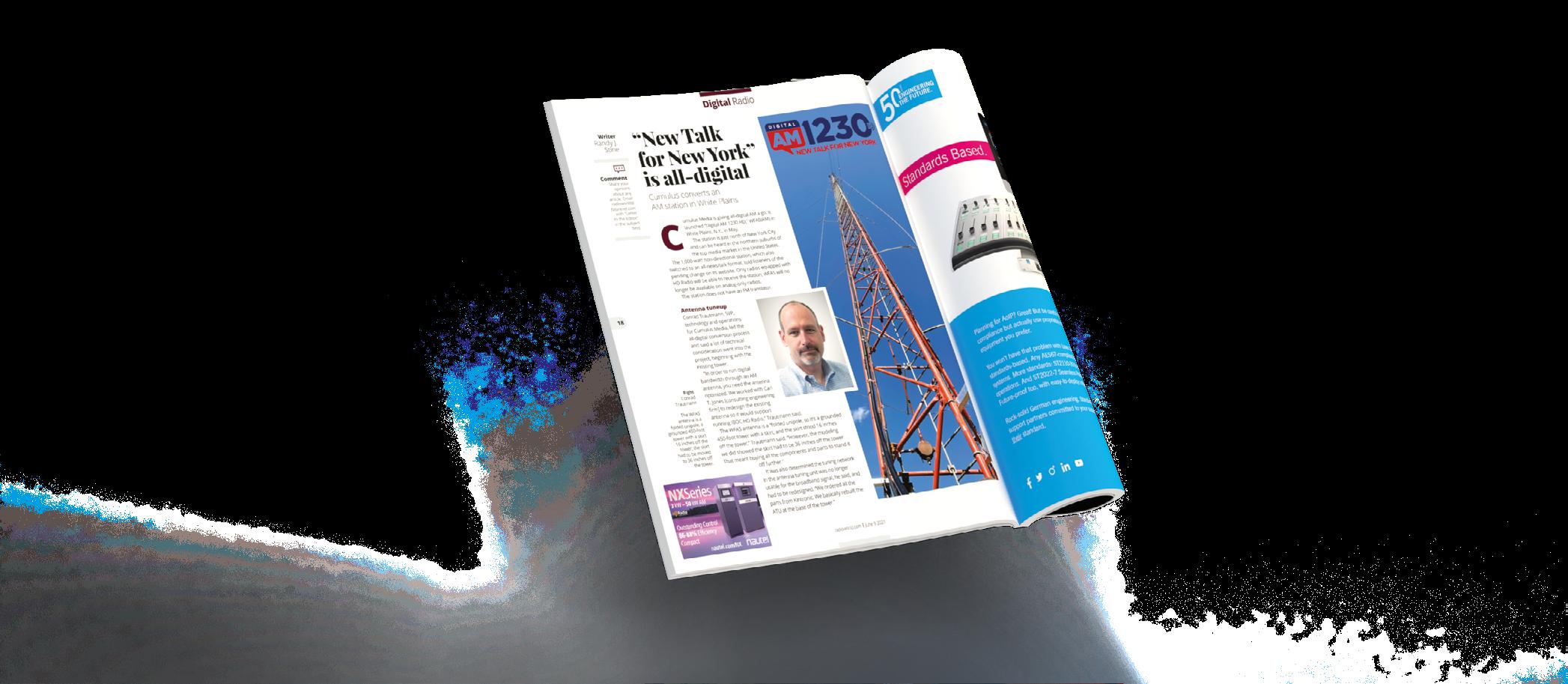
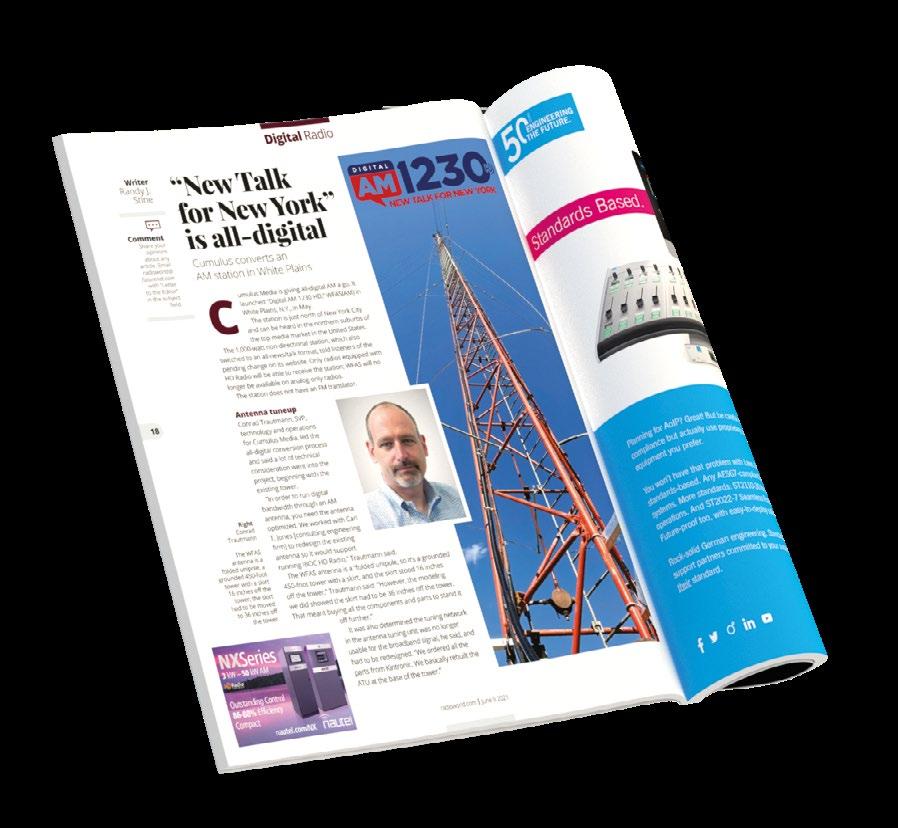
Rethink the radio bands
Regarding Larry Langford’s commentary “Sweeten the Pot to Entice AM Digital” (radioworld.com, search “sweeten”):
My initial concern is what a 100% digital signal will do to co-channel and first-adjacent stations who are operating in analog with listeners in the fringe. Should these analog AM stations be given compensation for the loss of coverage? Should they be given companion channels of operation to replace lost coverage?
I still recall a rather contentious debate in a broadcast list some decade or more ago. The CE of a Class 1B station was bragging about his IBOC, while some people were complaining about how it chewed up analog stations some 100 to 400 miles away at night. The fellow justified the use of power and propagation as being “necessary to cover the station’s market area, roughly 45 miles in radius.”

So to cover a 45-mile radius of market, we have to ruin a 400-mile radius of spectrum? Isn’t this like playing your 250-watt stereo at full volume in an apartment complex because you’re deaf and unconcerned that it’s bothering the neighbors?
I still think that in the scope of protecting what we have and need for public service, the FCC should revise the frequency tables, using the recent incentive auction as a model.
Move TV broadcasters out of Channels 5 and 6. Allot that spectrum to digital radio broadcasters with a caveat that after five years on the air, they surrender their analog service. Mandate that all new radios (especially mobile) be outfitted with the new DM band. And since most 1A/1B broadcasters see no financial value in long-distance transmission, cap all transmissions to provide a 45mile radius.
Working the math, you could get all the wannabe digital stations into the new band, and over time analog would pass. However it won’t be killed off by those wanting digital more than the need of listeners wanting analog.
Frederick R. Vobbe
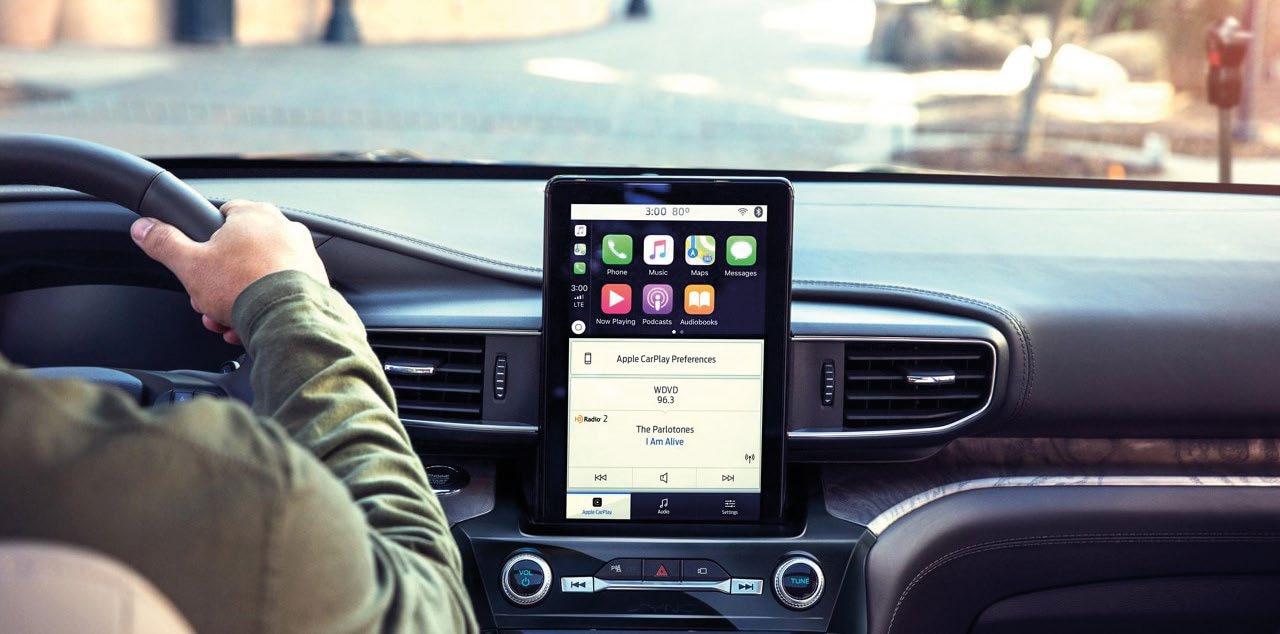
Above
Ford promo image Preset panic
I am shocked. I just took delivery of one of Ford’s most popular SUVs, a 2021 Explorer Limited. It has the new Bang and Olufsen Radio, HD with analog AM and FM, and it has Sirius.
Can you believe that there are only 15 presets?! A total of 15 for all of this. The dealer rep says, “Man, you need more than 15?”
Ford Customer Service thinks I am complaining about a defective radio. They are as obtuse as they can be. I am sounding an alarm, here. We’re in trouble.
Jonathon R. Yinger President and CEO The Christian Broadcasting System & Broadcast Properties LLC
A digital caution flag
Re: “New Talk for New York is all-digital” (radioworld.com, keyword WFAS):
Commercial viability of Cumulus Media’s digital AM 1230 HD conversion relies on deep penetration of digital AM radios in the consumer marketplace, essentially new vehicle sales. Given the broad propensity to retain legacy vehicles many years before replacement, it would take at least a decade to achieve critical audience mass sufficient to lure advertisers to digital stations. Cumulus’ deep pockets will keep WFAS 1230 on air, not sales. Station owners and equipment manufacturers eyeing AM digital conversions should keep a wary eye on this experiment and view it a cautionary tale before taking the plunge.
James B. Potter
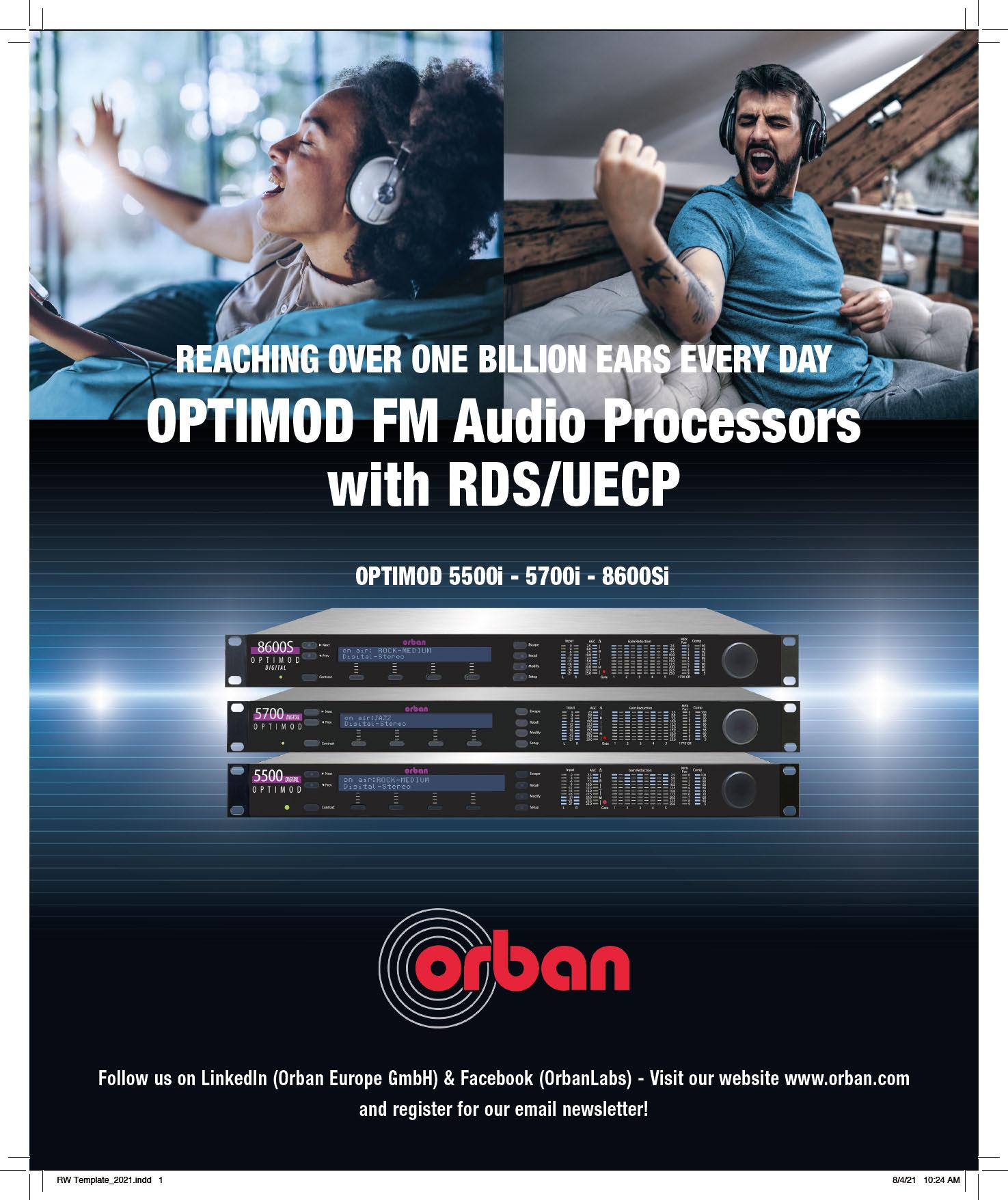
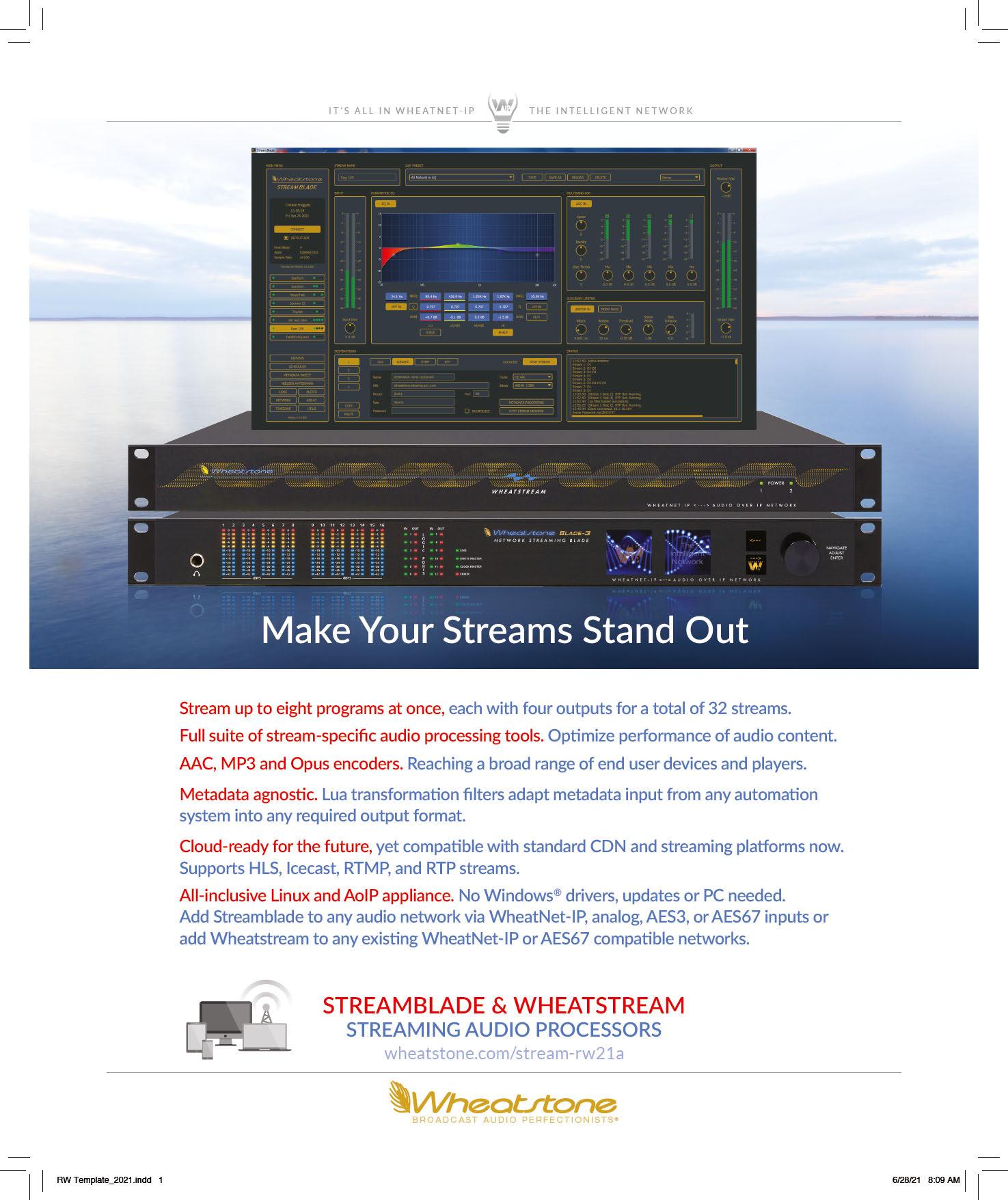
2021 Fall A RADIO WORLD EBOOK
Product Planner
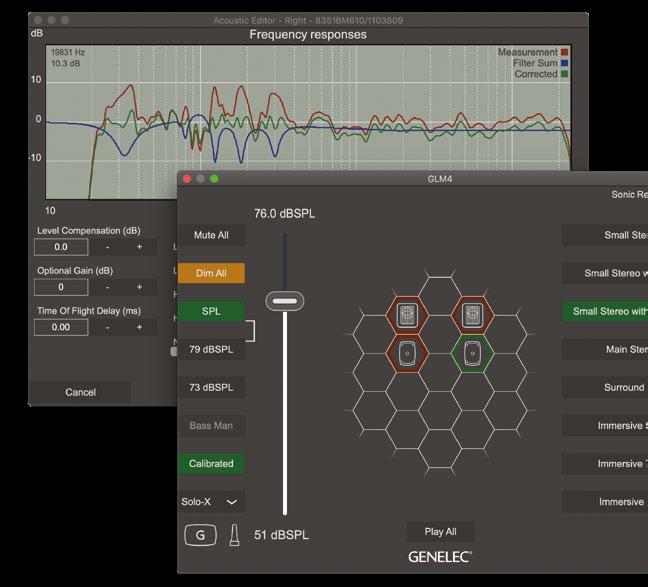

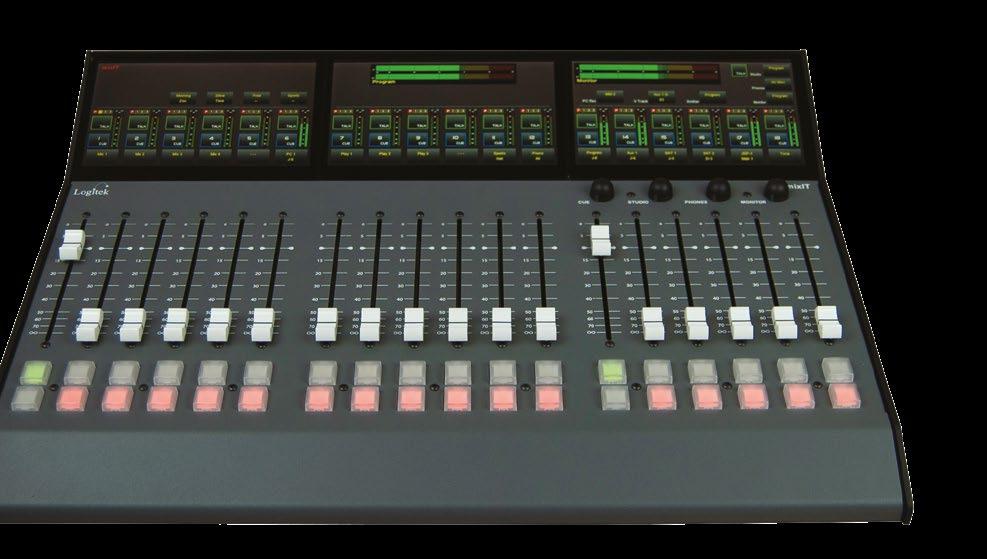
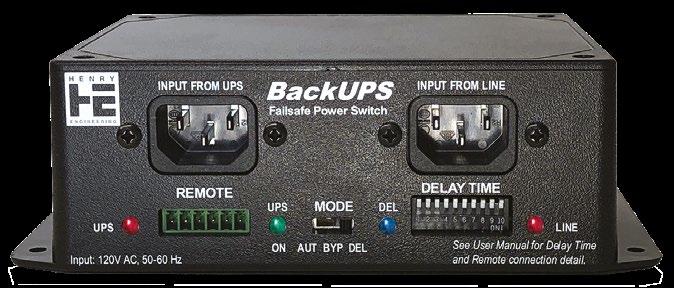


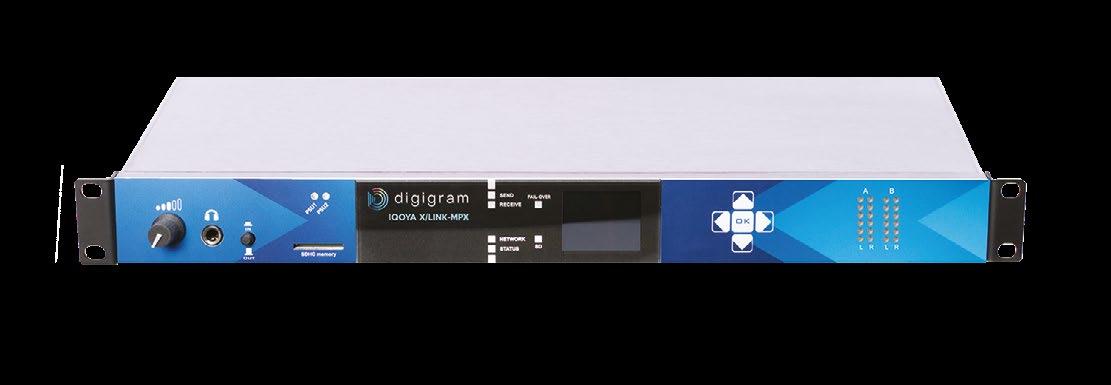
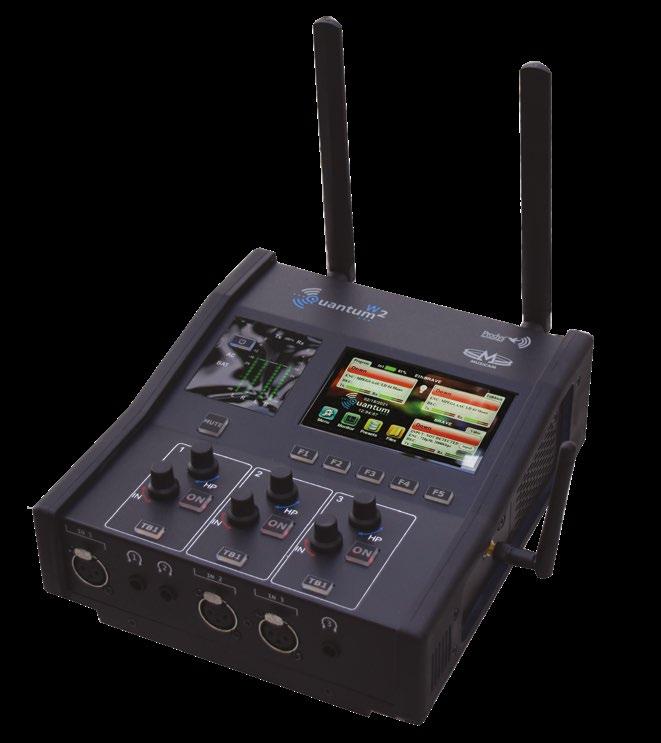
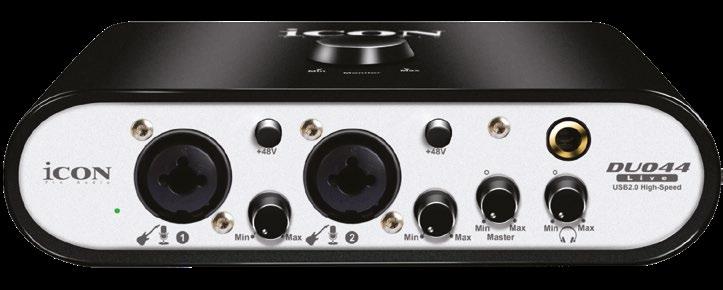
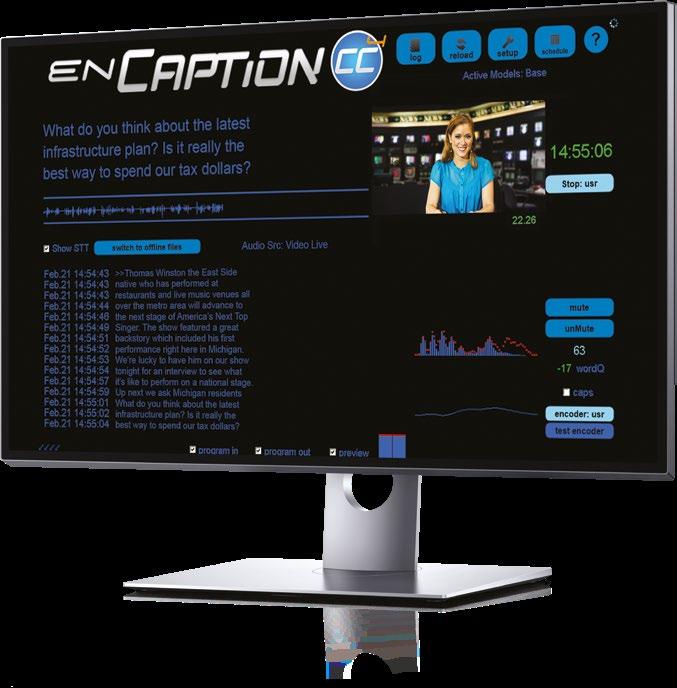
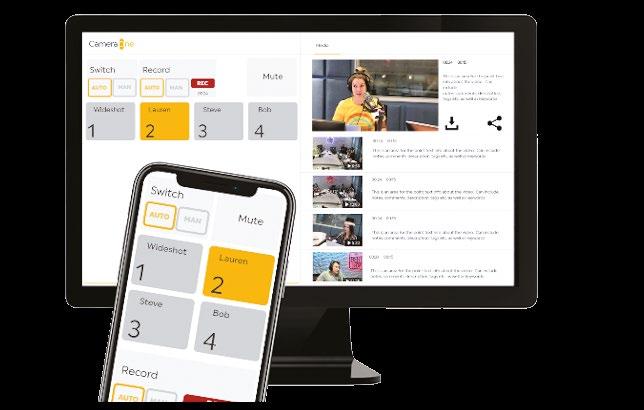
AUGUST 2021
Sponsored by 2wCom • Broadcast Bionics • Comrex • Digigram • DJB • ENCO Genelec • Henry • Inovonics • Orban • Orban Legacy Parts/Service Prodys • RCS • Telos Alliance • Tieline • Win-Group

August 2021 www.radioworld.com FOLLOW US www.twitter.com/radioworld_news www.facebook.com/RadioWorldMagazine CONTENT Managing Director, Content & Editor in Chief Paul J. McLane, paul.mclane@futurenet.com, 845-414-6105
Senior Content Producer — Technology Brett Moss, brett.moss@futurenet.com Technical Advisors Thomas R. McGinley, Doug Irwin Technical Editor, RW Engineering Extra W.C. “Cris” Alexander Contributors: Susan Ashworth, John Bisset, James Careless, Ken Deutsch,
Mark Durenberger, Charles Fitch, Travis Gilmour, Donna Halper, Craig Johnston,
Alan Jurison, Paul Kaminski, John Kean, Peter King, Larry Langford, Mark Lapidus,
Jim Peck, Mark Persons, Stephen M. Poole, James O’Neal, Rich Rarey, Jeremy Ruck, John Schneider, Randy Stine, Tom Vernon, Jennifer Waits, Chris Wygal Production Manager Nicole Schilling Managing Design Director Nicole Cobban Art Editor Rob Crossland ADVERTISING SALES
Senior Business Director & Publisher, Radio World
John Casey, john.casey@futurenet.com, 845-678-3839
Publisher, Radio World International
Raffaella Calabrese, raffaella.calabrese@futurenet.com, +39-320-891-1938 SUBSCRIBER CUSTOMER SERVICE
To subscribe, change your address, or check on your current account status, go to www.radioworld.com and click on Subscribe, email futureplc@computerfulfillment.com, call 888-266-5828, or write P.O. Box 282, Lowell, MA 01853. Licensing/Reprints/Permissions Radio World is available for licensing. Contact the Licensing team to discu ss partnership opportunities. Head of Print Licensing Rachel Shaw licensing@futurenet.com MANAGEMENT Senior Vice President, B2B Rick Stamberger Vice President, Sales & Publishing, B2B Aaron Kern Vice President, B2B Tech Group Carmel King Vice President, Sales, B2B Tech Group Adam Goldstein Head of Production US & UK Mark Constance Head of Design Rodney Dive FUTURE US, INC. 11 West 42nd Street, 15th Floor, New York, NY 10036
All contents ©Future US, Inc. or published under licence. All rights reserved. No part of this magazine may be used, stored, transmitted or reproduced in any way without the prior written permission of the publisher. Future
Publishing Limited (company number 02008885) is registered in England and Wales. Registered office: Quay House, The Ambury, Bath BA1 1UA. All information contained in this publication is for information only and is, as far as we are aware, correct at the time of going to press. Future cannot accept any responsibility for errors or inaccuracies in such information. You are advised to contact manufacturers and retailers directly with regard to the price of products/services referred to in this publication. Apps and websites mentioned in this publication are not under our control. We are not responsible for their contents or any other changes or updates to them. This magazine is fully independent and not affiliated in any way with the companies mentioned herein.
If you submit material to us, you warrant that you own the material and/or have the necessary rights/ permissions to supply the material and you automatically grant Future and its licensees a licence to publish your submission in whole or in part in any/all issues and/or editions of publications, in any format published worldwide and on associated websites, social media channels and associated products. Any material you submit is sent at your own risk and, although every care is taken, neither Future nor its employees, agents, subcontractors or licensees shall be liable for loss or damage. We assume all unsolicited material is for publication unless otherwise stated, and reserve the right to edit, amend, adapt all submissions.
Radio World (ISSN: 0274-8541) is published bi-weekly with additional issues in February, April, June, August, October and December by Future US, Inc., 11 West 42nd Street, 15th Floor, New York, NY 10036-8002. Phone: (703) 852-4600, Fax: (703) 852-4583. Periodicals postage rates are paid at New York, NY and additional mailing offices. POSTMASTER: Send address changes to Radio World, P.O. Box 282, Lowell, MA 01853.
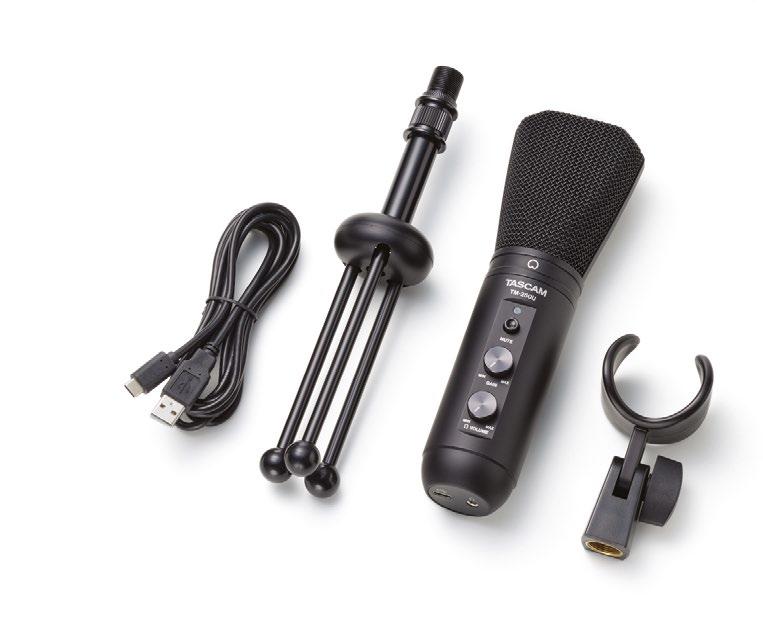
New Products in Abundance
Manufacturers have been busy! This supplement to Radio World features new and recently introduced products to serve the radio broadcast industry, from the microphone to the tip of the tower.
Henry BackUPS Have the Power
The BackUPS from Henry Engineering is a “failsafe” power controller for ensuring stable AC power to critical devices that rely on uninterruptible power supplies.
BackUPS constantly monitors the output of the UPS, and automatically bypasses the UPS if its output fails or becomes unstable. This keeps the load powered and allows the UPS to be safely disconnected for battery replacement or other maintenance.
BackUPS includes a restart-delay timer that ensures the UPS output is stable before the UPS is switched back online. Whenever the UPS output comes on, the system monitors its output for a preset time period. The UPS will be switched online only if the UPS output is stable during the delay interval. The delay time can be set from 10 seconds to 16 minutes, and can be defeated if it is not needed.
BackUPS is automatic once installed. The mode switch can select manual UPS bypass mode, or automatic operation with or without the restart-delay feature.
The unit can be remotely monitored and controlled. The remote bypass input allows the unit to “force bypass” the UPS via GPI control, useful for bypassing a troublesome UPS at a remote transmitter site.
It can also be used as a “remote reboot” device, to reset and reboot equipment via off/on power cycling. It can supply up to 15 amps of AC current to the load.
Info: www.henryeng.com
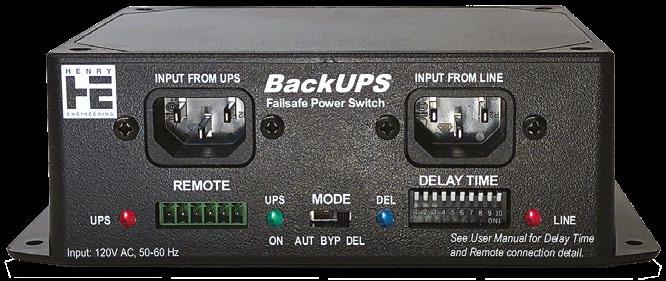
TASCAM Releases USB Microphone
The TM-250U from TASCAM is a USB condenser microphone with a supercardioid pattern.
The company says it is aimed at direct connection computer audio for podcasting, dialog and vocal recording, music recording, conferencing, and other forms of online audio.
The digital audio output is 16-bit/48 kHz. It has mic gain and a headphone output volume control along with a mute switch.
It also ships with a 6-foot USB C-A mic cable, mic holder and a desktop mic tripod.
Info: www.tascam.com
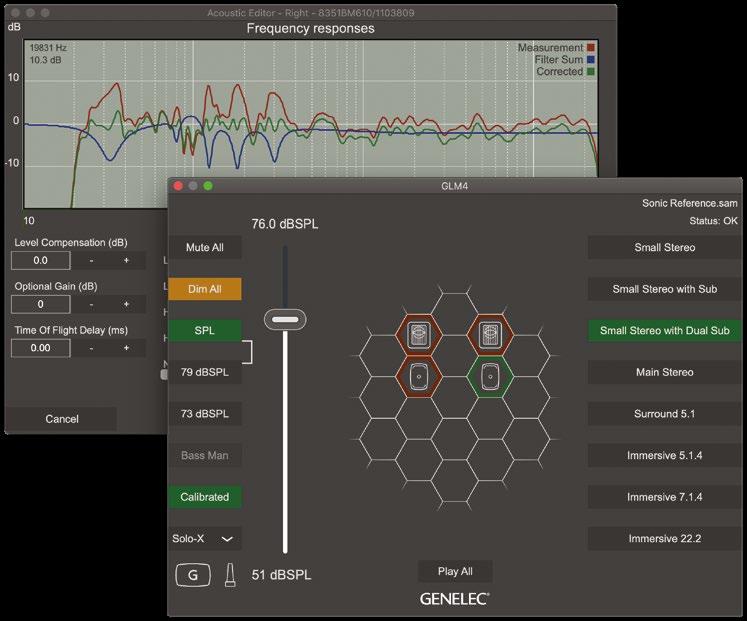
Digigram Launches Codec for MPX Over IP

Digigram’s Iqoya X/Link-MPX codec is intended for delivery of an FM MPX composite signal to one or several transmitter sites.
“Currently, most of the studio-to-transmitter links for FM transmissions rely on the transport of the baseband audio signal over IP networks,” the company noted in its release.
“This requires the FM composite MPX signal to be generated at each transmitter site with devices such as sound processors and RDS encoders.”
It cited growing demand for the transport of the MPX signal to be generated at the studio, “since it will help reduce the number of required equipment at the transmitter sites, optimize the global power consumption and maintenance costs.”
The Digigram X/Link-MPX supports analog MPX and digital MPX AES192, allowing analog-to-analog, analog-to-digital, digitalto-analog and digital-to-digital distribution of the MPX signal.
Optional µMPX compression is available to reduce the cost of transportation by using inexpensive network links.
Features include Forward Error Correction and redundant dual streaming with time diversity in PCM to ensure reliable transportation of IP streams. The codec uses the same hardware platform as the Iqoya X/ Link range, and features internal redundant power supply units.
Info: www.digigram.com
Visualization by Broadcast Bionics
Broadcast Bionics Camera One is a visualization system that the company says will enable radio stations to create live video streams and shareable video clips at an affordable price.
Camera One uses an HTML5 browser interface for setup and operation It offers automated camera switching, graphic generation, recording, streaming and sharing. Automated camera switching is governed with an algorithm that follows conversation.
Graphics can be created automatically from social media messages, album art and RSS feeds for news, travel and weather. Live streaming can be provided to YouTube Live, Facebook Live and Periscope.
The Camera One application runs on a PC or virtual machine. The company says it is easy to install and maintain. It is compatible with Blackmagic ATEM Mini (four cameras) and ATEM Television Studio (eight cameras) switchers.
Info: www.bionics.co.uk
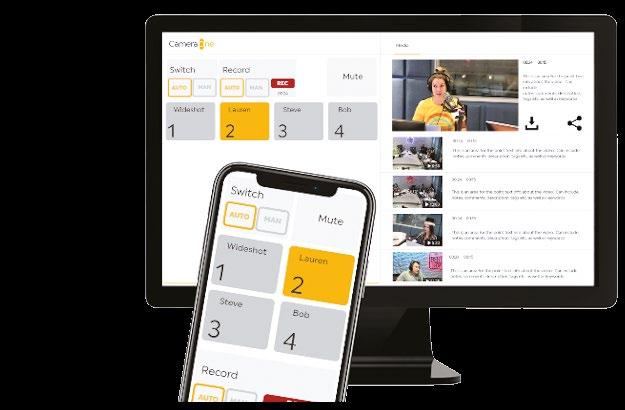
New Speaker Management Software From Genelec
Genelec unveiled GLM 4.1, the latest version of its loudspeaker manager software.
It says this update offers significant new features and improvements, including the next-generation AutoCal 2 automatic room calibration algorithm, which it says delivers a more precise frequency response in far less time than was previously possible.
GLM gives the user control over a room’s detrimental acoustic influences, producing mixes that translate more consistently to other rooms and playback systems, the company says. GLM integrates with Genelec Smart Active Monitors, allowing each monitor and subwoofer to be networked, configured and calibrated for the user’s acoustic environment.
AutoCal 2 takes advantage of background information of each monitor in a system, producing a quicker and more accurate discrimination between direct and reflected sound. The fast calibration speed is enhanced by a new 64-bit architecture and “fresh, lean” code.
GLM 4.1 also extends phase linearity on Genelec’s The Ones series of coaxial monitors down to 100 Hz, improving off-axis performance and further stabilizing imaging.
Other features include an increased number of EQ filters offering more flexibility, weighting refinements when taking advantage of GLM’s unlimited number of microphone measurement points, and a Solo-X mode for faster soloing of monitors when working with immersive content.
With the addition of French, Italian and Portuguese language options, international users are now able to choose among 10 languages.
Info: www.genelec.com

Inovonics Networks Its DAVID IV 719 Processor
Inovonics has added a network interface to its popular DAVID IV 719 audio processor. The change allows easy web access for setup, control and increased networking capabilities.
The web GUI can be controlled from any web-enabled device. SNMP makes remote management and control easier.
The 719 was launched in 2011 as part of the company’s “DAVID vs. Goliath” approach of strong features, value and performance in an all-digital DSP-based design. The 719N provides the same sound processing but adds the intuitive, menu-driven web interface.
Inovonics offers a free upgrade program for DAVID IV 719 owners who purchased their processors from Jan. 1, 2020 to May 2021; customers just pay for shipping. For owners of older 719 models, the upgrade costs $500 plus shipping.
Info: www.inovonicsbroadcast.com

Tieline Expands the Gateway
Tieline has added another IP audio codec to its lineup. The Gateway 4 is a multiple-application codec for live, remote, STL and SSL duties.
It supports four full-duplex audio channels in one rack unit. It can provide two stereo connections, or one stereo and two mono connections, or up to four mono connections. The codec also supports multiple unicasting to up to 20 endpoints and multicasting.
The Gateway 4 supports AES67, ST 2110-30, AES3 and analog I/O. An optional WheatNet-IP card is available.
Features include hitless packet switching using SmartStream Plus redundant streaming, and bandwidth aggregation using Fuse-IP technologies over internet connections; dual internal power supplies, dual LAN ports and dual AoIP ports; and an optional Gateway Euro ISDN module to integrate with legacy ISDN network infrastructure for primary or backup connections.
It is interoperable with other Tieline IP codecs and compatible over SIP with EBU N/ACIP Tech 3326 and 3368 compliant codecs and devices.
Gateway 4 is configurable through an embedded HTML5 Toolbox Web-GUI interface and is controllable using Tieline’s Cloud Codec Controller.
A firmware update brought more features including input compression and EQ that can be adjusted from anywhere using the Tieline Toolbox web/GUI interface. It also added AoIP stream phase-lock, which broadcasters to stream live events like concerts and major sports in stereo and surround sound simultaneously, or distribute live phase-locked audio between studios or network affiliates.
Info: www.tieline.com

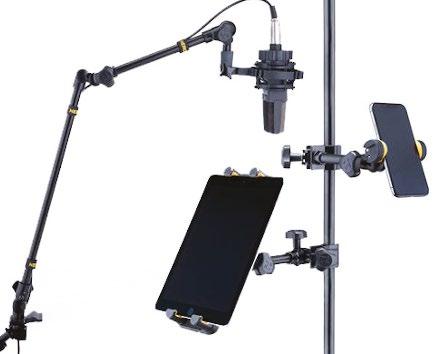
Hercules Unveils DG Adaptive Stand Line
Hercules has launched the DG Adaptive Series of stands for studio use by broadcasters, podcasters, content creators and musicians.
The line includes three new products: the Universal Podcast Mic & Camera Arm Stand, Smartphone Holder and 2-In-1 Tablet and Phone Holder.
Currently shipping, the new models all include 360-degree rotation, the TightVice locking mechanism, the ability to accommodate a variety of devices and accessories, and adaptive application for ease of mounting on any surface.
The Universal Mic & Camera Arm Stand can clamp to a flat or round surface and can hold a microphone, pop filter and a device, be it smartphone or tablet, so users can access content and record at the same time. Using Hercules’ TightVice 360-degree rotation, each component can adjust to any angle.
Akin to that, the Smartphone Holder can support a variety of smartphones. It sets up on a flat surface, or with round or square tubes, and supports phone sizes of 4.7 to 6.9 inches.
Meanwhile, the 2-In-1 Tablet and Phone Holder expands upon the Smartphone Holder, in that it extends to fit all tablets. With support for tablet and phone sizes 6.1 inches–13 inches, it also has an option to mount directly into a tripod stand.
DG Adaptive Models are available worldwide via Hercules dealers and e-commerce partners.
Info: www.herculesstands.com
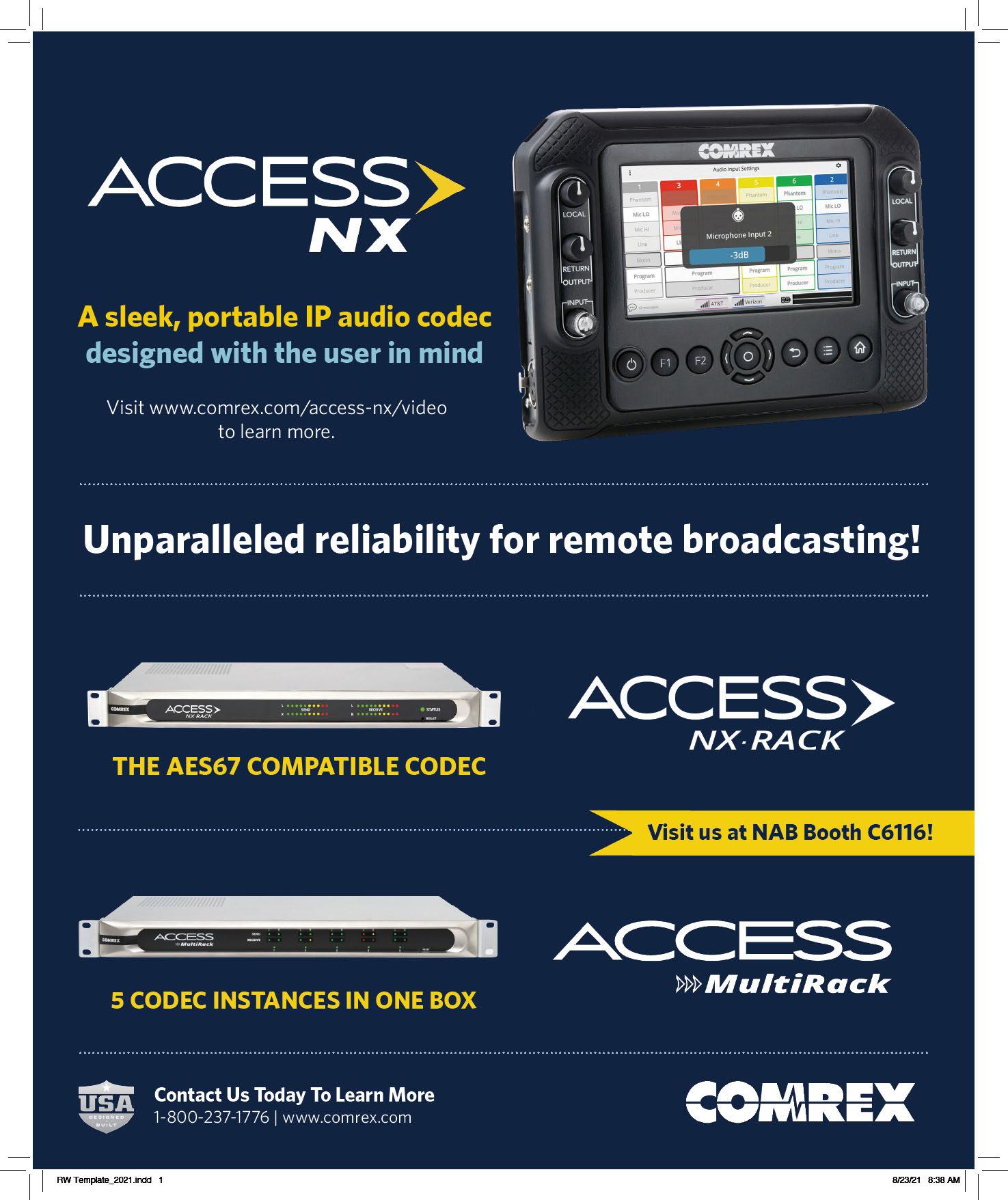

Telos Develops a High-Density iPort
Telos Alliance introduced a high-density version of its iPort, describing it as a multicodec gateway that lets broadcasters license up to 64 codecs in one rack unit.
“Worldwide networks use iPort for both distribution and contribution, spanning multiple time zones,” the company stated in its announcement.
“Now, the iPort legacy continues with the more powerful iPort High Density, which transports multiple channels of stereo, mono and dual-mono audio across IP networks, including private WANs, IP-radio links and over good quality public internet connections, perfect for large-scale distribution of audio to single or multiple locations.”
The iPort High Density comes with eight bidirectional stereo codecs, configurable to run in MPEG or Linear PCM mode.
“Broadcasters can license additional codecs up to a maximum of 64, as well as add Enhanced aptX encoding.”
The box connects to existing Livewire networks using one ethernet cable (Cat-6 recommended) for all I/O. It can also pair with Telos Alliance xNodes via an adequately configured Ethernet switch for use as a standalone multistream codec.
Info: www.telosalliance.com

New Silence Detector From Broadcast Tools
The Audio Sentinel + Web/RJ is available now from Broadcast Tools.
The manufacturer describes it as a nextgeneration, web-enabled, two-channel analog stereo silence and phase monitor.
It features an integrated, transparent, 2x1 switcher for silence-based automatic back-up switching or manual switching via web browser, front-panel controls or remote contact closure.
In automatic mode, when silence is detected on the primary input, it will automatically switch to the backup input via mechanical latching relays, and when audio returns it can automatically switch back to the primary input.
The browser-based HTML5 web interface of the Audio Sentinel + Web/RJ is powered by an ARM Cortex processor that supports SSL/TLS email (Gmail, etc.), SMS-email notification, as well as SNMP.
The device features audio I/O with pluggable screw terminal-blocks and standard RJ-45 audio jacks wired in parallel for plug-and-play wiring using Cat-5/ Cat-6 cabling.
Info: www.broadcasttools.com.

Sonifex Is Mad About MADI (and Dante)
Sonifex has added the AVN-DIO20 to its range of Dante audio converters with a Dante to MADI and AES3 bridge. All 64 MADI channels can be connected bidirectionally with AoIP, together with eight stereo channels of AES3.
The AVN-DIO20 takes a MADI feed, sample rate converts all 64 channels and places them on the Dante network, mapped using Dante Controller. It simultaneously takes the 64 channels mapped to the device on Dante Controller, optionally sample rate converts them, and transmits them on the MADI output.
The unit accepts eight stereo AES3 inputs and place them on the Dante network, replacing 16 of the selected MADI input channels. The unit also sends eight stereo AES3 outputs, which can be sourced from the Dante channels, in blocks of 16.
The unit accepts MADI signals from a compatible SFP module or the coaxial BNC input. The input can be selected via the built-in web GUI or, by default, it will use an SFP module if it is inserted into the unit. The coaxial BNC output is disabled while the SFP is in use.
There is an additional automatic failover mode which, when selected, allows for automatic switching to the BNC input when the SFP signal is lost, providing audio redundancy.
The MADI output audio can be clocked from the Dante network, in which case the output SRC is bypassed, or the recovered clock obtained from the MADI input.
It’s powered using Power over Ethernet (PoE), using Neutrik EtherCON connectors, with primary and secondary ports for power and data redundancy. The AVNDIO20 uses the latest Audinate Dante chipsets so is AES67- and Dante Domain Manager-compliant.
Info: www.sonifex.co.uk
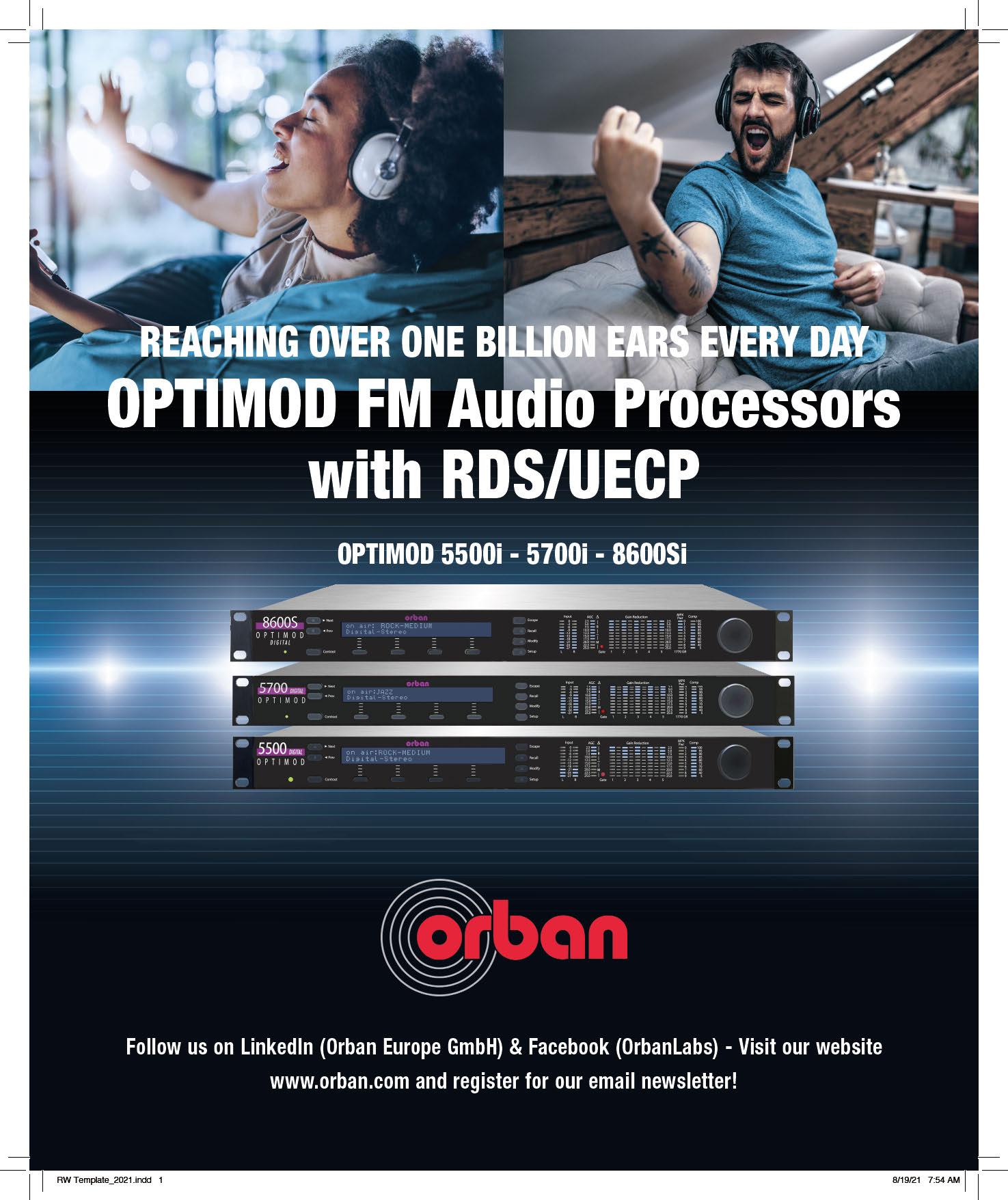
2wcom Adds Decoder/Satellite Receiver Angle
To move MPX signal generation into the studio or playout center reduces costs and maintenance at the transmitter sites, 2wcom says. Its new MPX solutions take advantage.
The codecs MPX-2c, MPX-1c and the MPX1ds, a combined decoder/satellite receiver, follow the needs of flexibility in distribution. These MPX solutions provide inputs for analog audio, AES/EBU and audio over IP.
Depending on system conditions, it is possible to encode the MPX signal with PCM for high-quality transmission or, if the aim is to optimize bandwidth, the possibilities include: creating the MPX signal just to include audio plus pilot, with RDS data forwarded separately or regionally assembled at the transmitter sites; dereased bitrates via reduction of the sampling frequency and the sample depth; or adjusting the µMPX compression algorithm, possible bitrates down to 320 kbps.
At the transmitter site it is possible to substitute the RDS data with regionalized information, if needed. The optional satellite receiver allows the distribution of the MPX signal via satellite, which implies several advantages for broadcasters: source redundancy, cost efficiency and increased coverage in regions lacking broadband IP.
For most solid distribution, it is possible to enable transmission mechanisms via the web interface, like dual-streaming, Pro-MPEG FEC or SRT (Secure Reliable Transport).
There are two optional hot-pluggable power supplies available.
The 2wcom 4audio MPX series offers webGUI for configuration and remote control along with HTTP, FTP, Telnet, NMS or SNMP.
Info: www.2wcom.com
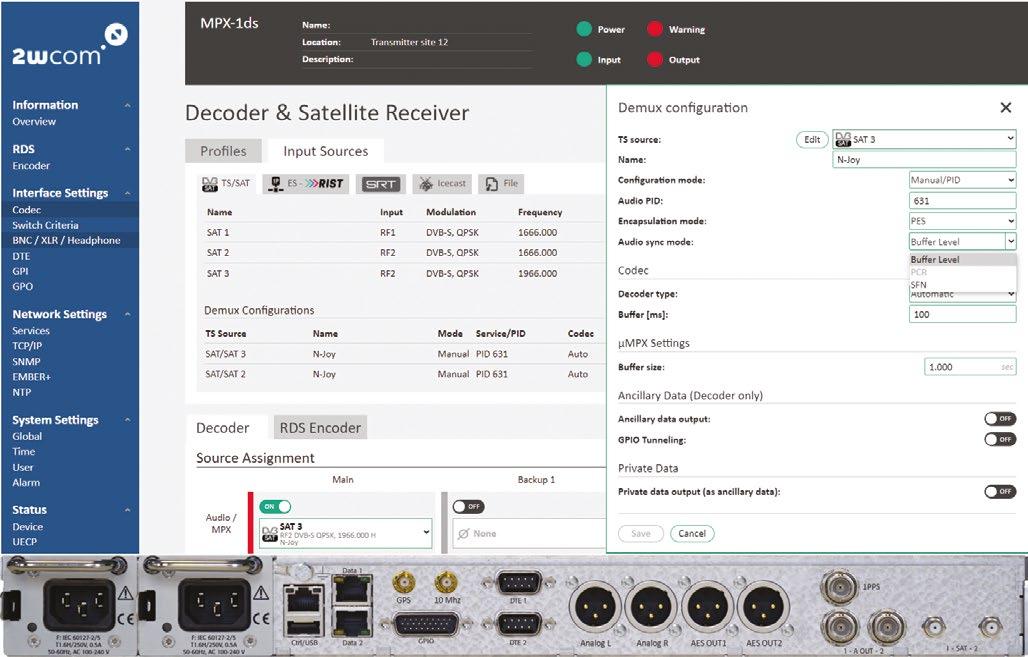
WinMedia Offers Cloud-Based Services Wheatstone Sharpens the Blade
WinMedia notes that computing technology has undergone a major change in recent years — physical computers are no longer needed onsite. Its asy radio and TV broadcasters can take advantage of this opportunity.
The company has been investing in setting up server clusters around the world to provide virtual, secure and backed-up machines for broadcasters. It has also created virtual environments for the operation of WinMedia software, including music scheduling, processing, playout and stream encoding in the cloud.
With its latest push in technology, the company is launching WinCloud (shown), a software-as-a-service suite providing iOS and Android apps and multicast streaming. WinCloud will be available starting in September and operate on a monthly service fee basis.
Info: www.winmedia.org
The Blade 4 is Wheatstone’s fourth-generation WheatNet-IP I/O unit.
The company says Blade 4’s integration of key studio elements into one native AoIP environment is unique, including audio processing, codecs, mixing, routing, control and operating system.
It has a built-in OS for running apps and customized scripts for specialized software, metering apps and virtual interfaces. Also included are Opus, MP3 and AAC codecs for streaming audio between the station studio and home studios, plus add-ons such as dual audio clip players enhanced to play compressed or uncompressed audio files from the built-in USB ports to eliminate memory storage issues.
Blade 4 is AES67-compliant for interoperability with a range of AES67 networks and devices and supports SMPTE ST 2110, including the NMOS discovery standard for AES67 and next-generation television networks.
Blade 4 puts I/O and intelligence into one AoIP environment for functions including routing audio, mixing sounds and processing feeds, to turning mics on or off, controlling consoles and triggering mix-minus presets by show, location or talent.
Info: www.wheatstone.com
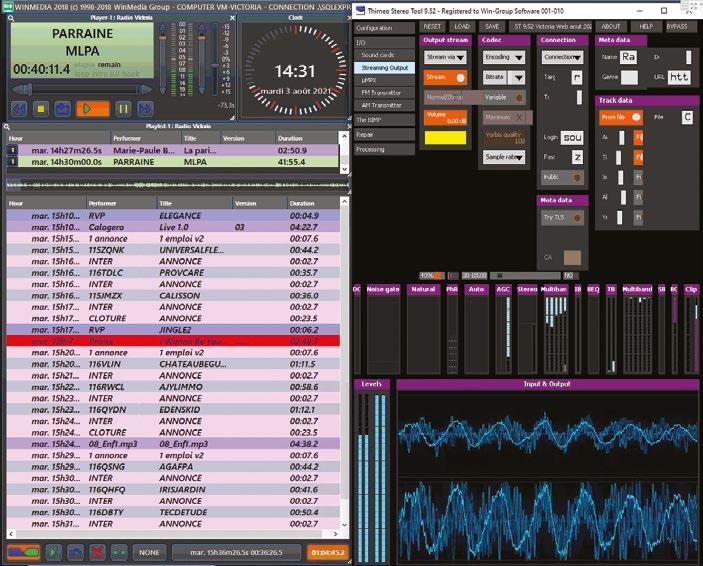


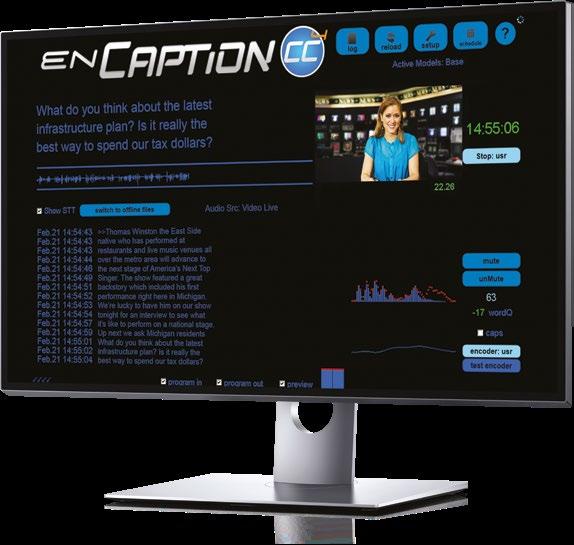
ENCO Updates enCaption and WebDAD
ENCO Systems announced several improvements and updates to its WebDAD and enCaption products.
WebDAD is an HTML-5 browser-based native remote control companion to the DAD automation and playout system.
“Across both the DAD and WebDAD products, passwords with special characters are now supported, which will help many use a more secure password to better conform with their station’s data security policies,” said Media Solutions Account Manager Bill Bennett.
“Along those lines, we’ve added button and deck security within WebDAD so the log-in follows button security for normal DAD users.”
For those who like to edit arrays and libraries and manipulate assets within the WebDAD interface, they can now download library cuts via the HTML client directly to their remote computer. WebDAD’s user interface has also been updated. enCaption is an automated captioning and transcription platform used by TV and radio broadcasters to make programming more accessible. Bennett said the system now inserts a chevron into captions to indicate when someone new is speaking.
“We’ve also integrated a powerful new punctuation detection feature that inserts commas, exclamation points, periods and question marks automatically, based on voice characteristics.”
To change input and output signal mapping across various types of sources, or to change between sources across live and file-based content, the user can now save each configuration mapping as a unique profile and call it back up, manually or by API call. enCaption also now has improved word filters and an updated optional CEA-608/708 Embedding capability.
Info: www.enco.com
ERI Flies New Panel Antenna
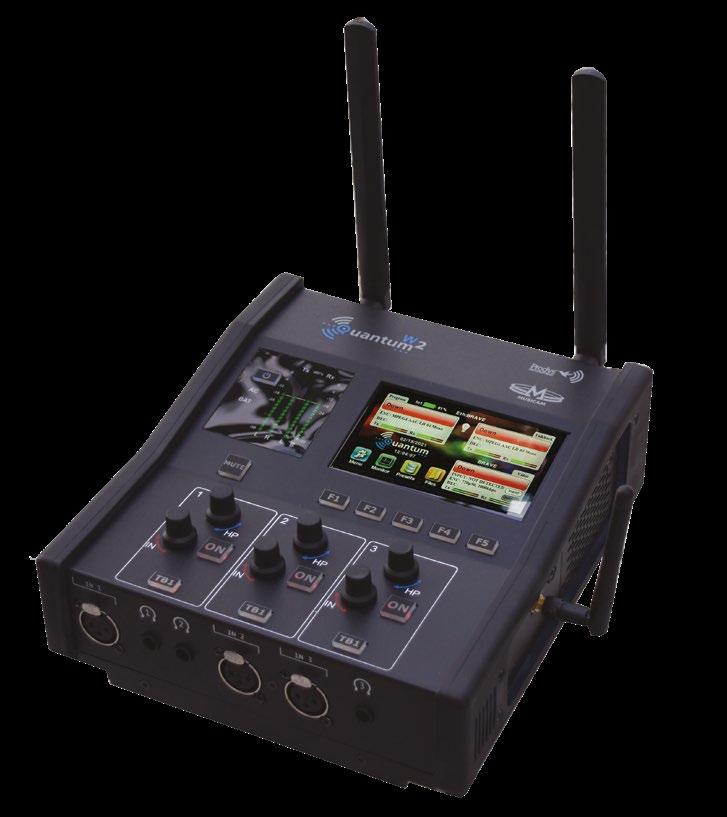
The 1200 Series FM panel antenna from ERI is designed to address the need for highperformance and economical FM panel antennas for FM translators and low-power FM stations.
The antenna element is rated to handle up to 1 kilowatt of input power. Model 1200 antennas can be used on large-face towers to provide coverage with excellent circularity in the horizontal plane. The panels can be used as directional FM antennas as well. ERI notes that there are many situations where only an FM panel array can provide multiple nulls in a directional azimuth pattern. The standard element is circularly polarized, and versions are available for horizontally and vertically polarized requirements. The circularly polarized model has a single 7/8-inch EIA flanged RF input and has an integrated power divider and phasing loop at the element input. The 1200 elements are supplied with a reflecting screen and mounting brackets. ERI can also provide the antenna integrated into a support pole or lattice structure. As with all ERI FM antenna products, far-field pattern measurement on ERI’s 50-acre test range is optionally available, as well as computermodeled directional arrays.
Info: www.eriinc.com
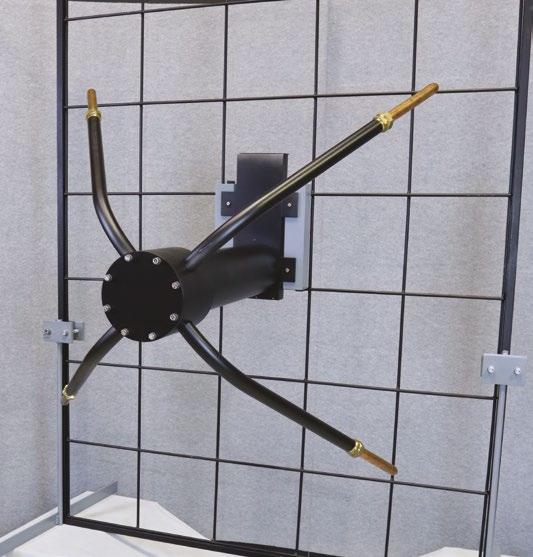
Prodys Releases New Generation of Quantum Codecs
A notable trend in broadcast is the increasing integration of audio and video transmission. Prodys says its answer to this is the new generation of Quantum2 portable codecs.
The Quantum2 portable units are compact commentary devices capable of encoding and transmitting audio and video.
The codecs offer multiple audio input possibilities: between three and five microphone inputs, line-level inputs, digital, USB) and the ability to mix them all to create two independent stereo audio channels.
They can work with eight I/O channels in AES67 AoIP networks, such as Dante and Ravenna.
An independent video channel allows sending and receiving images with a latency of less than 0.5 sec.
The line is compatible in video transmissions through the implementation of encoding and transmission protocols, e.g., SRT, MPEG-TS, RTMP, BRAVE.
Streaming forwarding allows comments and video to be sent directly to the cloud.
Multiple IP interfaces (LTE, Wi-Fi, Ethernet) enable secure and quality transmissions over unreliable IP networks thanks to the BRAVE protocol.
The Quantum2 family can be controlled locally, or remotely from the MCR using the ProdysControlPlus application. The company says this application simplifies operation of the equipment by users, who can delegate the configuration and monitoring of the portable equipment, including the preview of the video signal, to the technicians at the MCR.
Info: www. prodys.net

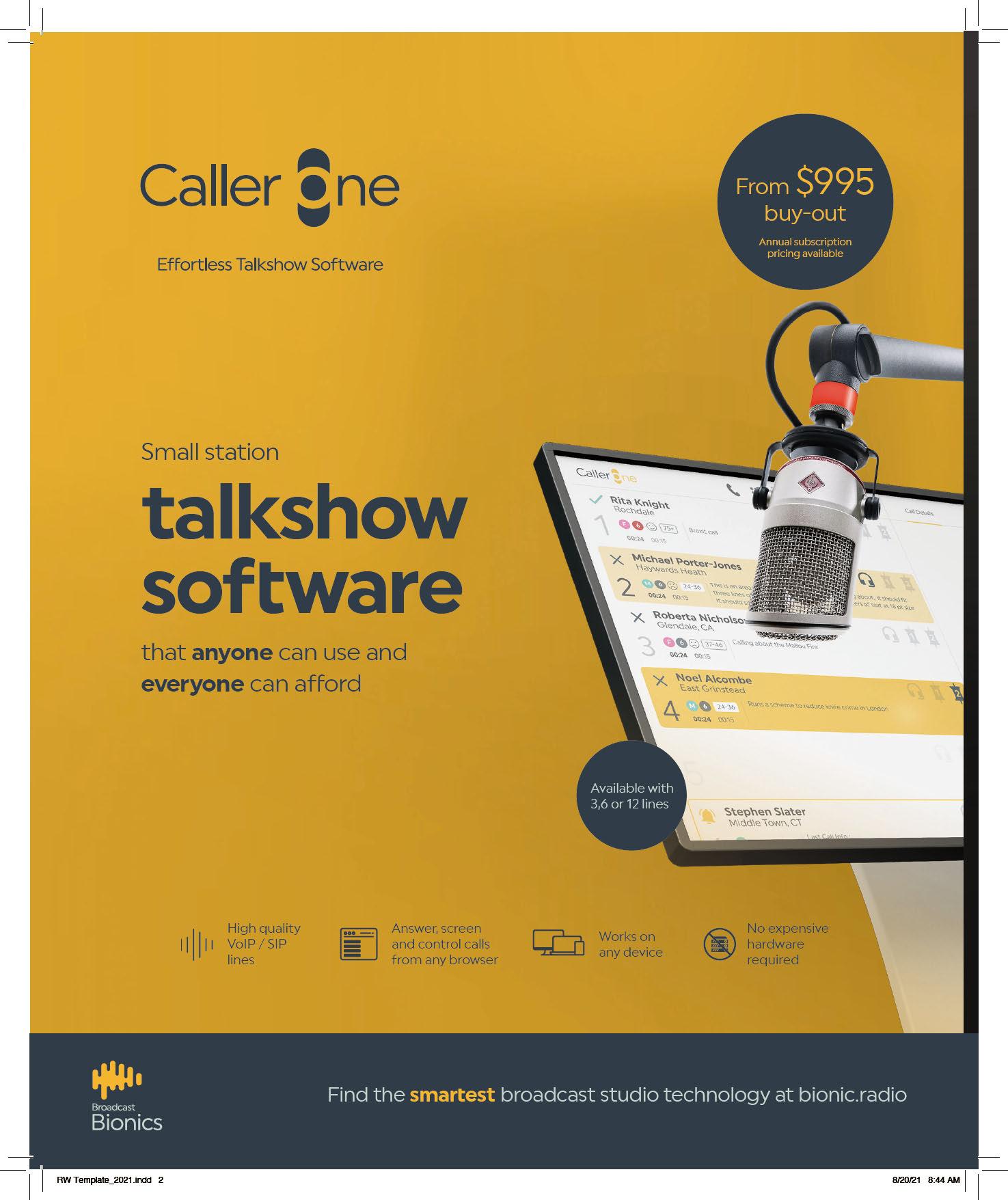
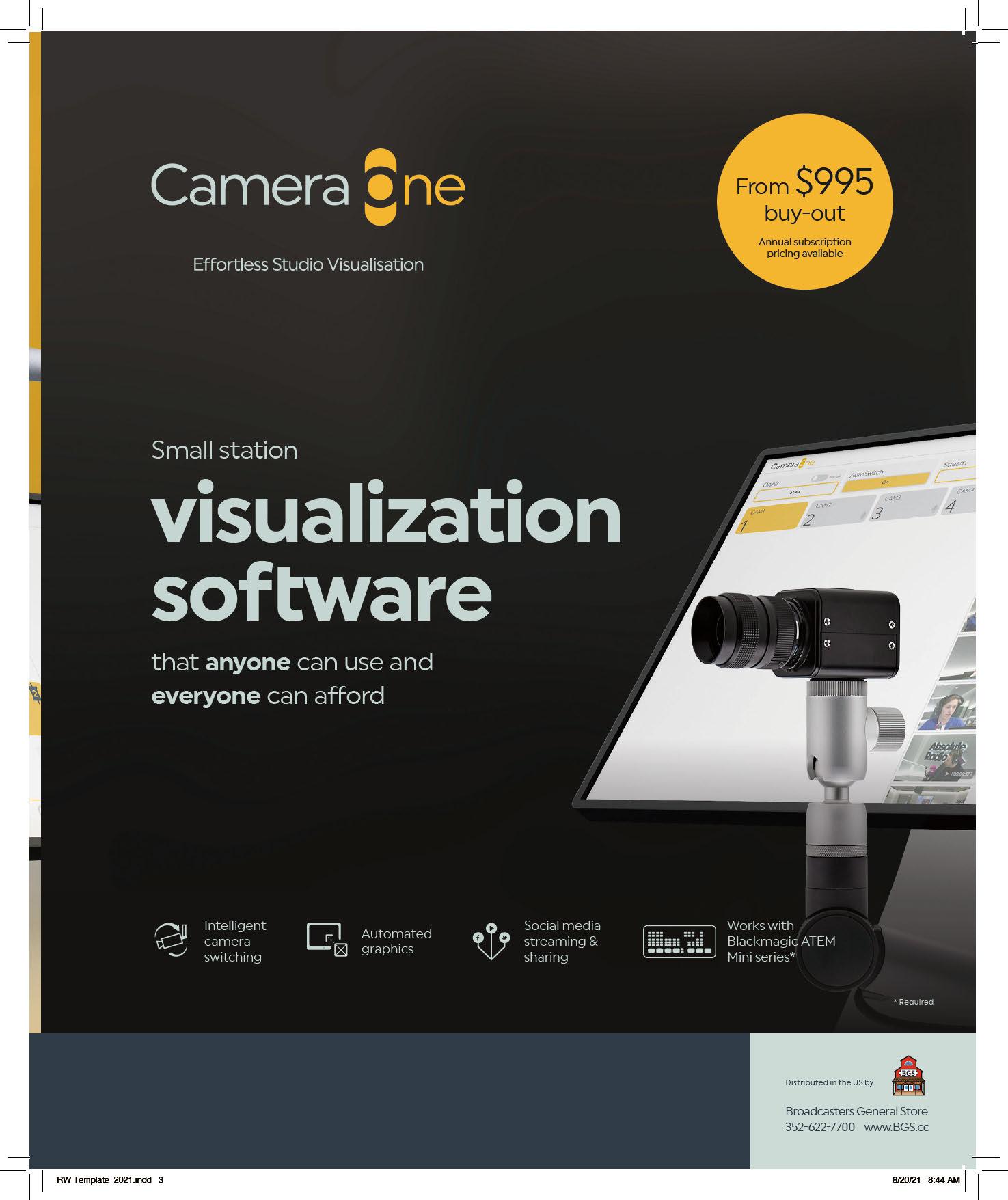
Virtual Sound Processing by Orban
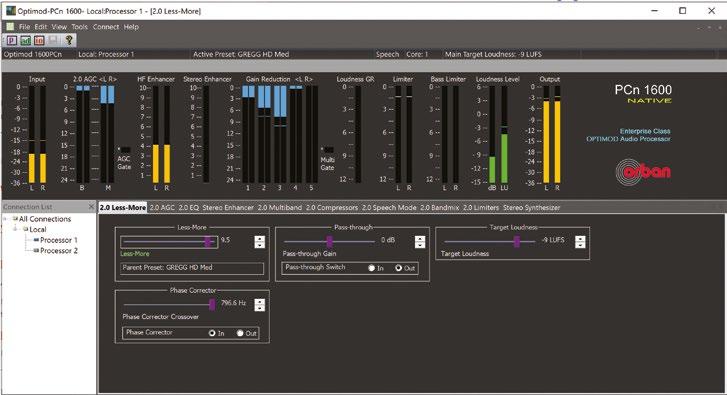
Orban reintegrated the Optimod-PCn 1600 audio processing software into its product portfolio.
Optimod-PCn 1600 is suitable broadcasters who need a flexible and scalable software solution for their audio processing for online
streaming, HD Radio, DAB/DAB+ or TV.
The company says the processing provides automatic level control of audio sources, multiband dynamic equalization with both subharmonic and harmonic synthesis, phase-skew correction and an oversampled true-peak limiter that prevents distortion and optimizes codec performance without clipping or primitive pumping.
It offers loudness control according to EBU R128 and ATSC A/85 using the ITU-R BS.1770 loudness model, or the user can choose proprietary Orban CBS Labs Loudness Meter and Loudness Controller, which the company says provides BS.1770 compliance even better than a BS.1770-based loudness control.
Optimod-PCn1600 is suitable for Microsoft Windows/Intel PCs as well as virtual machines. The number of audio processors can be chosen individually according to a user’s needs. The available audio processors can be administered and controlled via the supplied Windows PC control application.
Info: www.orban.com
Arrakis Is at the Apex
Arrakis Systems released Apex Creator, a recorder and editor that is suitable for podcast and radio applications. The company says many podcasters use freeware that ends up costing more in time and energy. It says Apex Creator is designed to create dynamic and effective podcast shows. It is also cuitable for use with Apex automation for radio applications.
Apex Creator works standalone on a Windows PC, with a third-party sound mixer or integrated with an Arrakis audio console. If connected to an Arrakis console it autoconfigures to play and record to and from the console.
As an editor Apex Creator is a cut-and-splice editor for assembling audio programs. It includes specialized production features for adding entry and exit audio blocks. The Apex Creator editor can auto-level the program and insert silence as needed. It can also mix a music bed beneath the edit file.
The player features a 10-page, 18-hot-key player that can play three keys simultaneously with individual level control for each key. The hot keys play out to the USB channel on the Arrakis console for mix to the console
Arrakis says Creator’s feature set is intended to help audio producers in radio and podcasting without presenting them with needlessly complex multitrack editing processes.
Info: www.arrakis-systems.com
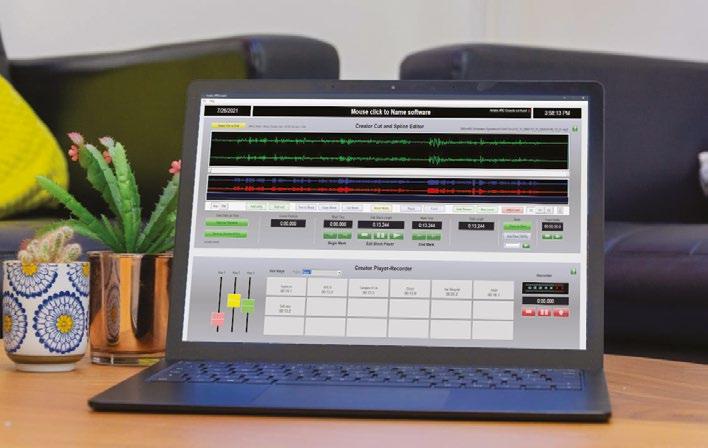
RCS Zetta Offers Dark and Light Modes
RCS has polished up its user interface by adding new Dark and Light modes and a crisper, modern graphic display. It has also expanded GPIO output events and variables.
The latest version includes Notes and Scripts as part of the Live Metadata XML export.
The server-side search feature acts as a library search engine for sites with large libraries. Enhanced multitrack editor tools include the ability to save newly created clips as Quick Records. The user can now drag and drop clips as new audio throughout Zetta.
There are updated metadata navigation and tools such as locking execute command cue points within an evolving piece of audio.
RCS says it expanded the Media Importer, with options to preview outside audio before ingested by Zetta.
The system integrates with Zetta Cloud Based Disaster Recovery and features expanded “COVIDfriendly” workflows, like having external Talent record voice tracks from anywhere, which will automatically save in the local Zetta log, maintaining security without a need for VPN access.
Sister app Zetta2Go has undergone some similar modifications, with new user layouts and Dark Mode.
The Zetta2Go Voice Track module has been redesigned, using all of the marks available in Zetta, like trim in, trim out and volume points. F1 Dynamic Help is available throughout Zetta2Go.
Hot Key functionality has been improved, and expanded daily user workflows like Fixed and Stretch have been expanded.
Info: www.rcsworks.com
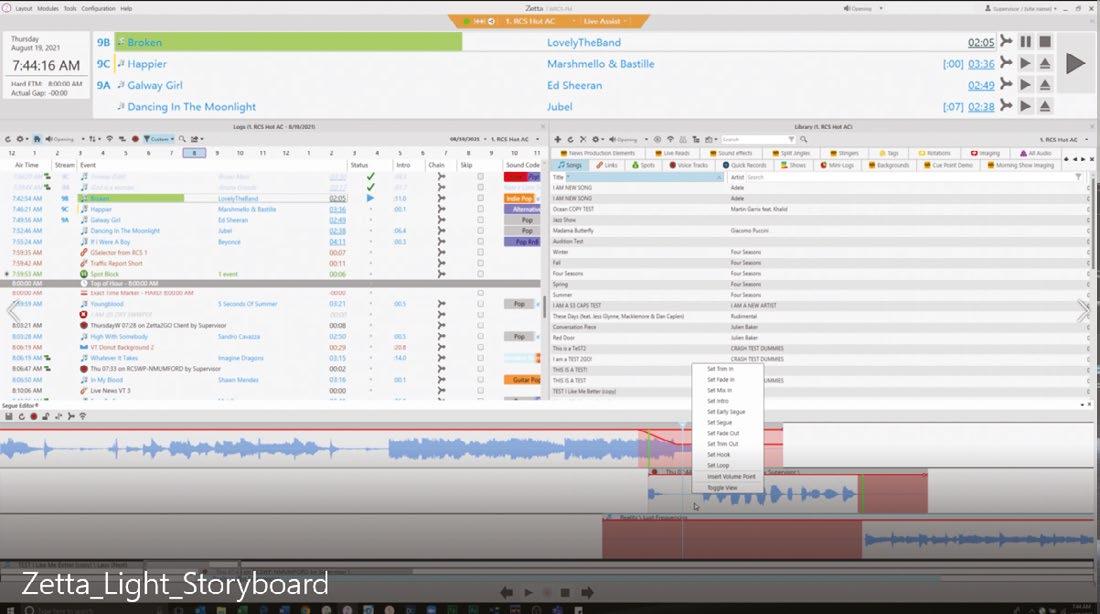
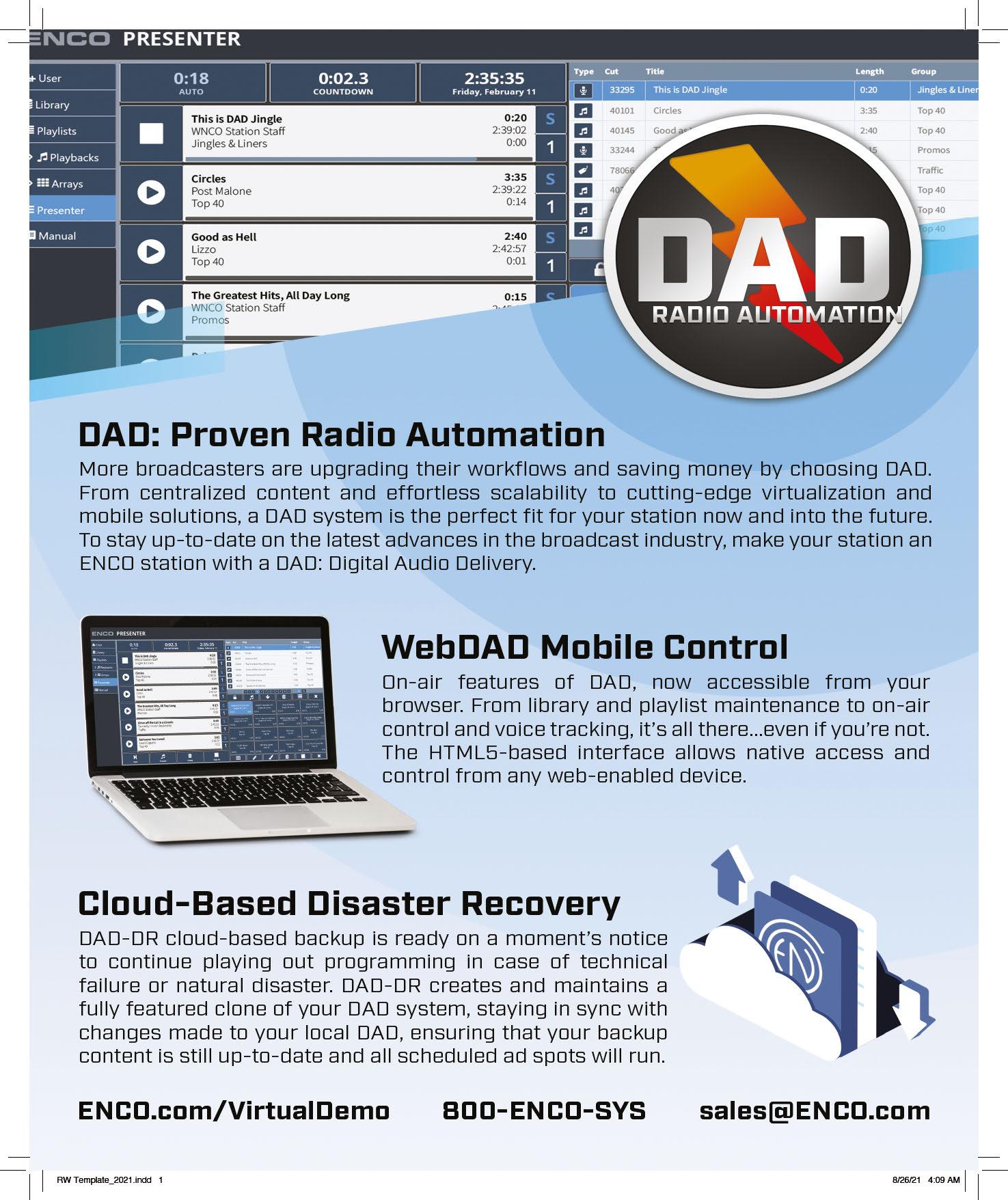
Broadcast Electronics Introduces D-Pro Series
Broadcast Electronics is out with a line of digital audio processors and switching products for FM and streaming, called the D-Pro Series.
The D-Pro-6FM, shown, is a top-of-the-line six-band FM processor that includes dynamic RDS generation and automatic backup audio provision.
The D-Pro-3FM features three-band processing and RDS and backup. The BE D-PRO-6HD is optimized for HD Radio and streaming and has an optional Shoutcast/ Icecast I/O.
Also in the line is the RD-E-1 standalone digital RDS encoder that interfaces with automation systems and offers comprehensive Radiotext and Radiotext+ support.
Other products in the D-PRO line include the DXVR, a digital audio changeover that selects an input from an RDS verified MPX, analog L/R, AES/EBU, or an optional streaming IP input and routes it to both analog L/R and AES/EBU outputs.
The DMPX is a “Swiss Army knife” for your FM airchain that switches automatically between inputs in case of an STL failure and encodes in stereo and adds RDS.
The STL-SAT will accept AES/EBU and analog L/R as well as stereo MPX from a composite STL, and automatically switch to the on-air feed. It monitors and fixes any RDS problems as well, so it’s at home with translators.
The new MPX-S Multimode network splitter is used to differentiate advertisements airing among different areas of the same FM radio network, while the BE SFN adapter is connected between the STL receiver and the FM modulator and generates a 10 MHz reference signal used for the FM modulator, no GPS frequency reference is needed.
Info: www.bdcast.com

Progressive Concepts Now Distributes RFE
Progressive Concepts is the new U.S. distributor for transmitter manufacturer RFE, and announced the availability of a new line of transmitters.
The DS series of FM broadcast transmitters offers sixthgeneration LDMOS technology with color touchscreen control, a built-in stereo encoder and the Cosmic four-band audio processor. Also included is Ethernet connectivity for worldwide remote control and AoIP connectivity.
It is available in power levels of 30, 50, 100, 300 and 500 Watts as well as 1, 2, 3 and 6 kW. DS models are FCC-and CCIR-compliant.
The Cosmic audio processor from RFE is installed as board-based module. It uses a DSP microprocessor to obtain higher audio quality and a low level of distortion of 0.01%. In addition, features include AMC (Automatic Modulation Control), which keeps the average deviation value constant within the preset limits to avoid annoying overmodulation peaks, and SFP (Selectable Filter Profile) for four preset audio equalization profiles (Bass Enhancer, Hi Lift, Crystal Voice, Club).
Info: www.progressive-concepts.com

Angry Audio Adds to StudioHub Line
Angry Audio expanded its StudioHub line of studio interconnects with four rack-mounted XLR breakout boxes.
Each steel box is one rack unit high and 19 inches wide, and made of powder-coated steel. Each features XLR connectors on the front and RJ-45 connectors and DB-25 D-subs on the rear.
Angry Audio explaines the configuration choice: “RJ-45 connectors in the StudioHub+ format accommodate mono and stereo analog and digital audio signals. DB25 connectors are in the popular AES59 standard (Tascam format). Plus, we even give you RJ-45 connectors in the new AES72 standard.”
The four versions offer front-panel complements of 16 female XLR connectors (XLR_16F); 16 male XLR connectors (XLR_16M); eight female and eight male XLR connectors (XLR_8FM) (pictured); and two groups of four female and four male XLR connectors (XLR_4FM). Contacts are gold-plated.
Info: https://angryaudio.com


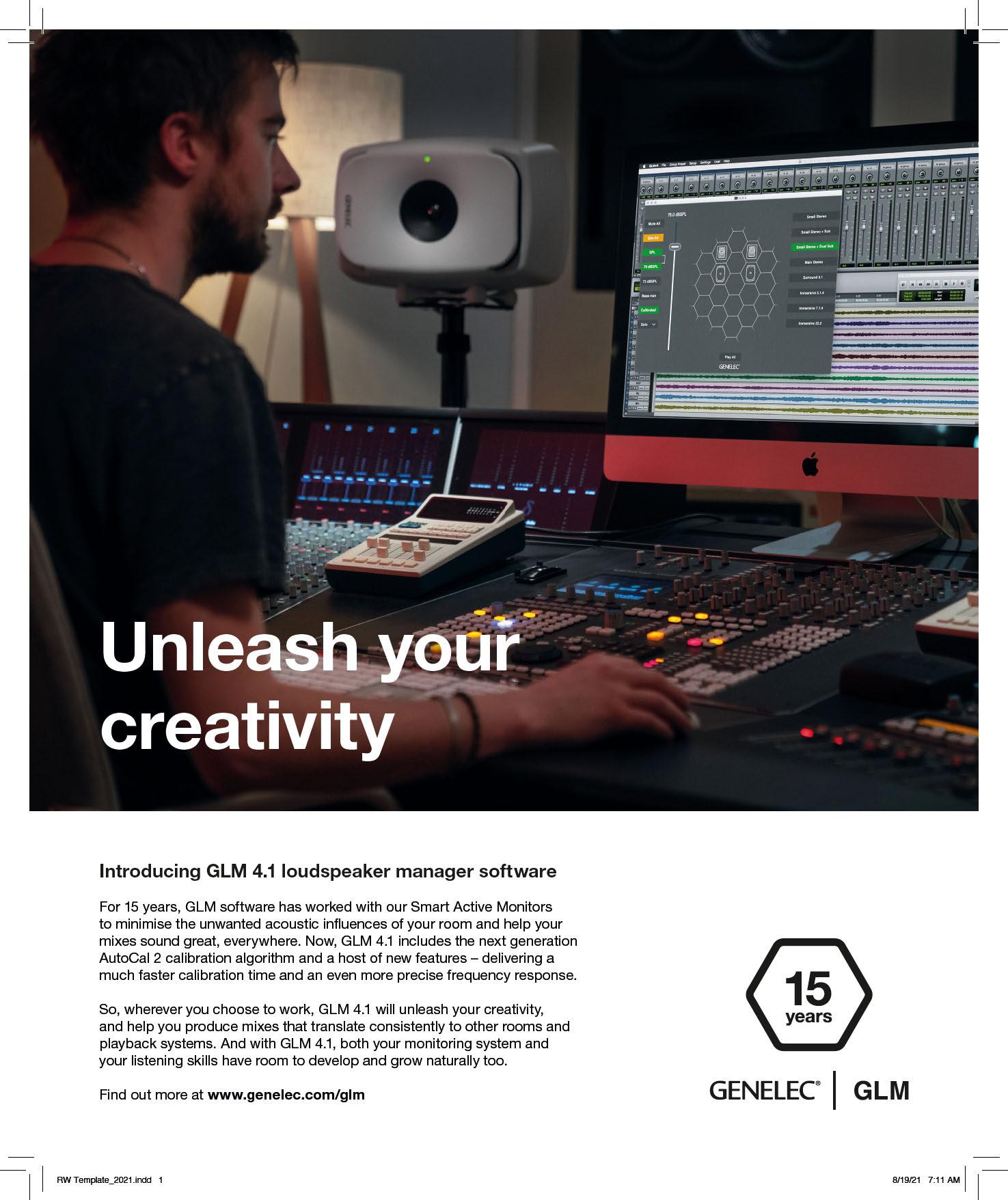

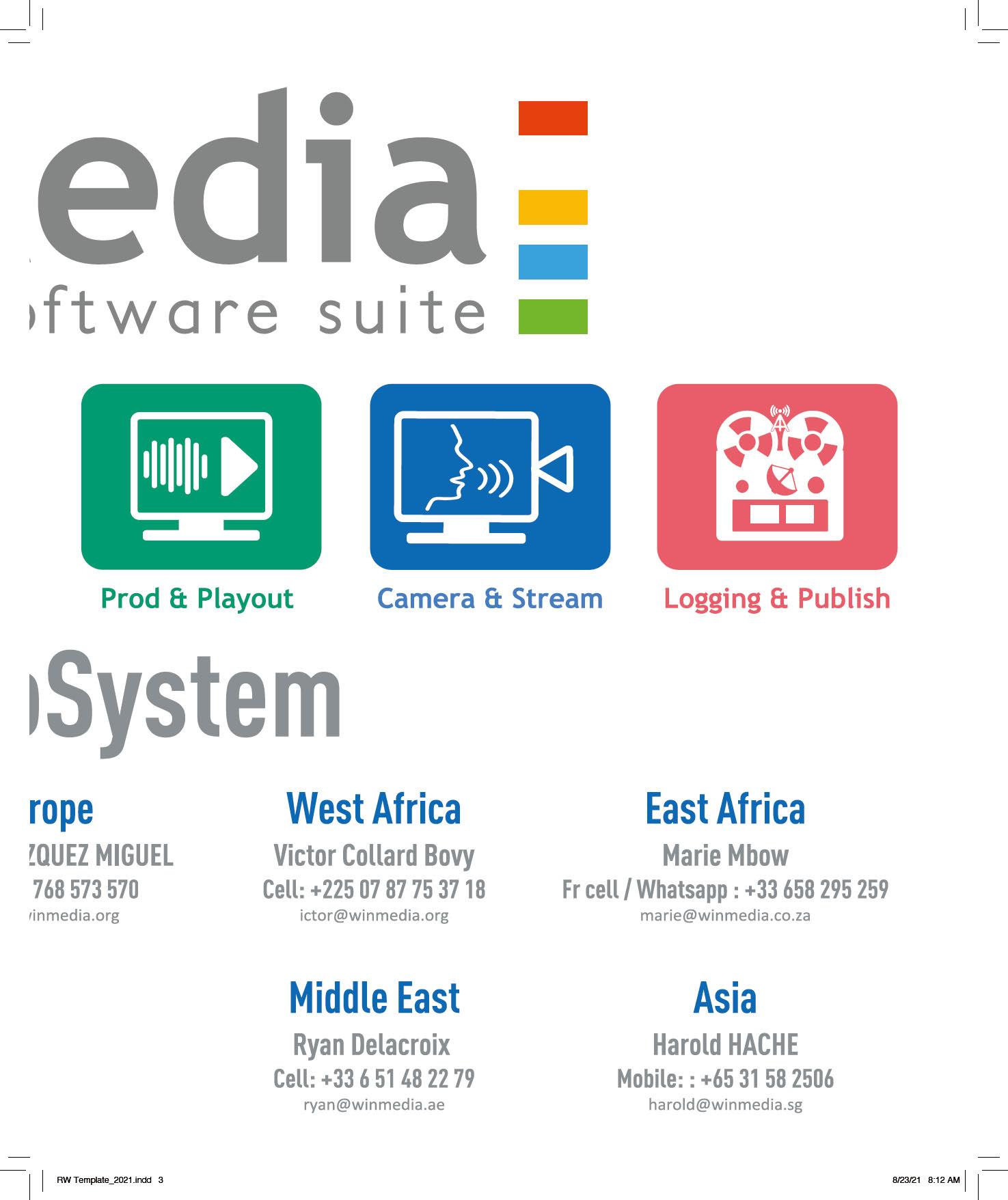
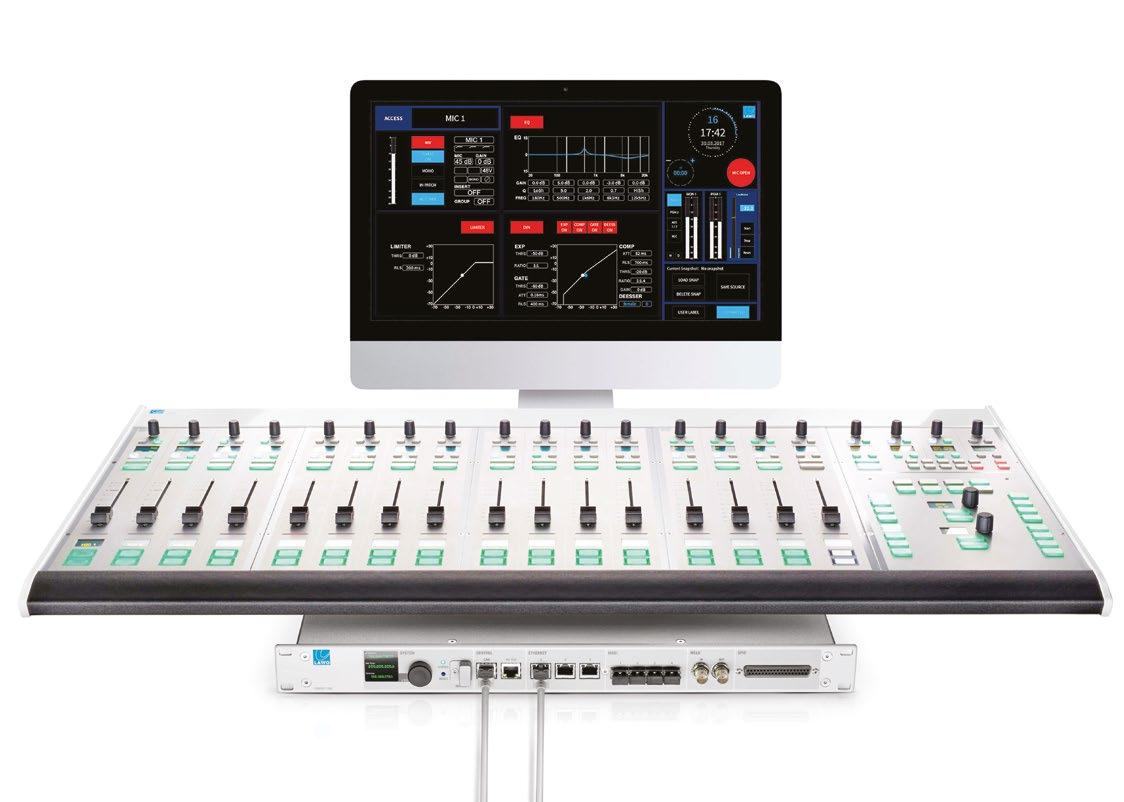
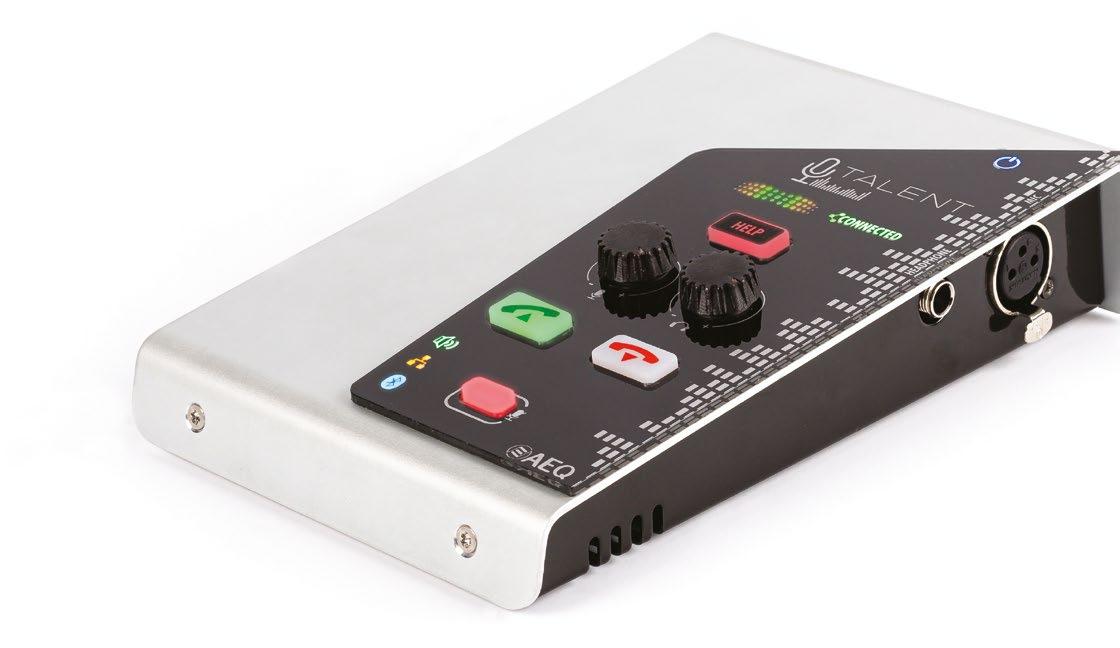
Lawo Issues Software Upgrade
Lawo issued a software update for users of its radio mixing consoles, Power Core mixing engines and On-Air Designer configuration software.
“The new radio software, v6.6 PL-003, represents a major upgrade to On-Air Designer, the configuration software used to customize the functions of Lawo’s radio mixing consoles and audio cores,” including the ruby radio console, the company said.
The ruby, shown (and written in all lowercase letters), provides snapshots for recall of saved parameters and settings, with motorized faders that automatically recall saved positions and context-sensitive user keys that can be customized using On-Air Designer software.
“The new software adds the ability to selectively load snapshots using extended logic functions, enhanced AES67 stream tuning tools, and integrates control of Lawo A__line audio I/O devices into the radio workflow,” Lawo stated.
This update adds features to the configuration web pages of Power Core, Lawo’s Ravenna/AES67 mixing engine and I/O gateway device, as well as enhancements for Lawo’s VisTool GUI Builder Software.
Version 6.6 software applies to Lawo radio products including ruby, sapphire, sapphire compact, crystal and crystalCLEAR mixing consoles, Power Core and Nova17 MK2 engines, VisTool MK2 GUI Builder software, and the On-Air Designer console customization tool.
Release notes and a software download are available at the downlinks link at the Lawo website.
Info: www.lawo.com
Burk Has SNMP Agent for ARC Plus
Burk’s SNMP Agent option is now available for ARC Plus Touch and ARC Plus SL. The SNMP Agent enables users to integrate their ARC Plus v5 remote control units with their corporate IT, ticketing and inventory management systems.
This new option allows enterprise management systems to retrieve ARC Plus meter and status channel values using SNMP Get requests. ARC Plus commands can be initiated using SNMP Set requests. Traps
or alarm messages can be issued directly by the ARC Plus to up to four SNMP managers. The SNMP Agent can be used in conjunction with the existing SNMP Plus manager option to provide full upstream and downstream SNMP capability.
The SNMP Agent’s text-based operations run independently from Burk’s AutoPilot monitoring and control software, complementing AutoPilot’s broadcast-friendly graphical control interfaces and comprehensive logging, reporting and alarm management.
The SNMP Agent option can be factory installed on new systems or added to units in the field.
Info: www.burk.com.

AEQ Shows Talent
AEQ says its Talent portable codec provides connectivity for microphones and headphones for the host or guests of a program, from home or anywhere. The unit transmits high-quality audio, from a microphone to the studio console, and brings the feed back to the headphones.
Talent also allows for an external stereo audio source to be connected to it physically or via a Bluetooth connection. These sources are added to the microphone signal, allowing users to broadcast and comment on concerts, sports or other events, or use individual audio files or playlists from a phone or PC.
If a Bluetooth connection is established with a phone, it can be used to do a phone interview, either through a conventional call or through Skype, WhatsApp, Zoom and other apps. These calls can be mixed to the program that is sent to the station.
To send the audio to the station, a domestic internet connection can be used, DSL, fiber or a wireless 3G/4G/5G data connection through a simple router-modem with a SIM card.
In situations where there is no IP connection, AEQ Talent can reach the studio using the Bluetooth connection of a smartphone.
The small, lightweight AEQ Talent is designed for desktop use.
Info: www.aeqbroadcast.com or www.aeq.eu
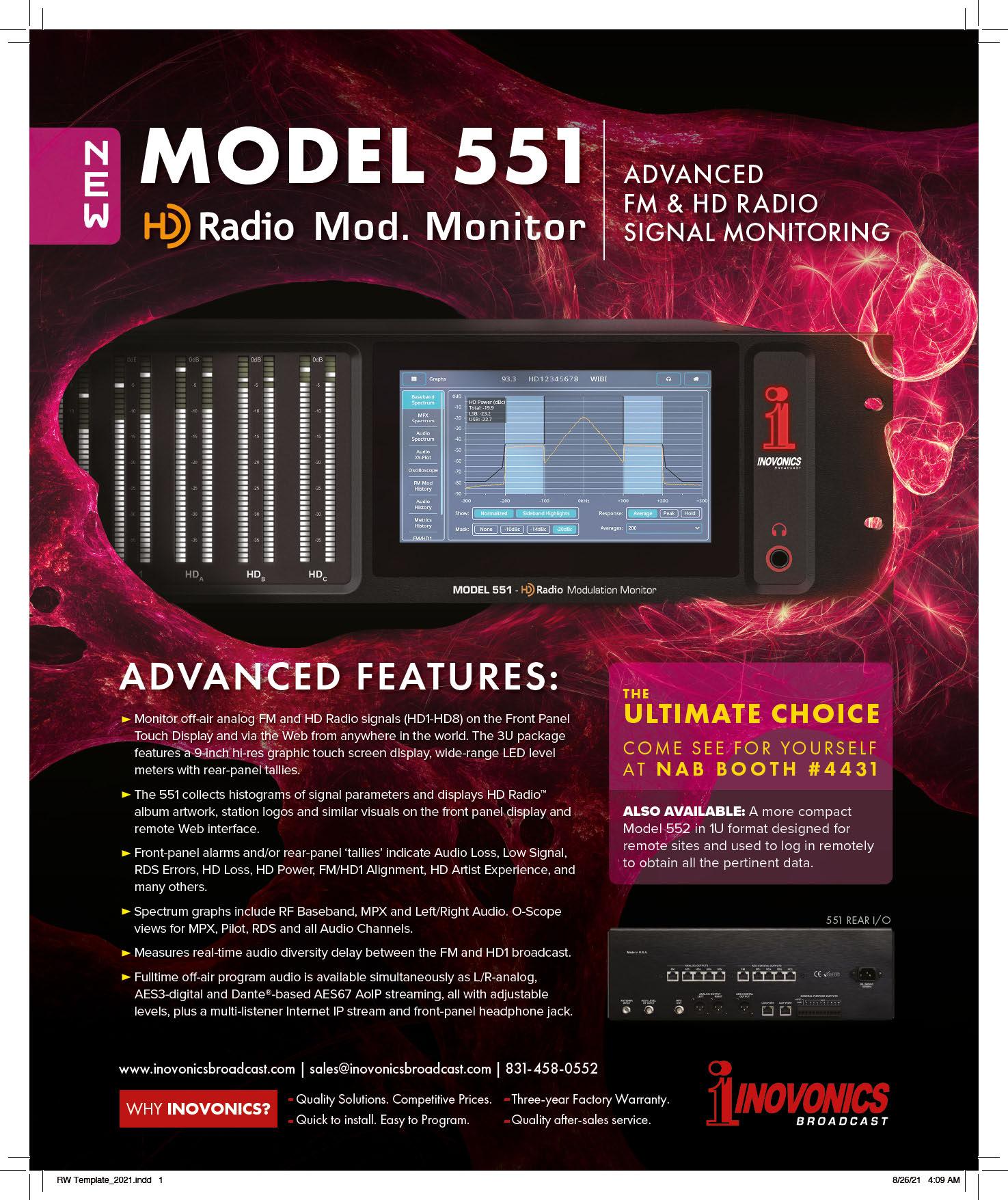
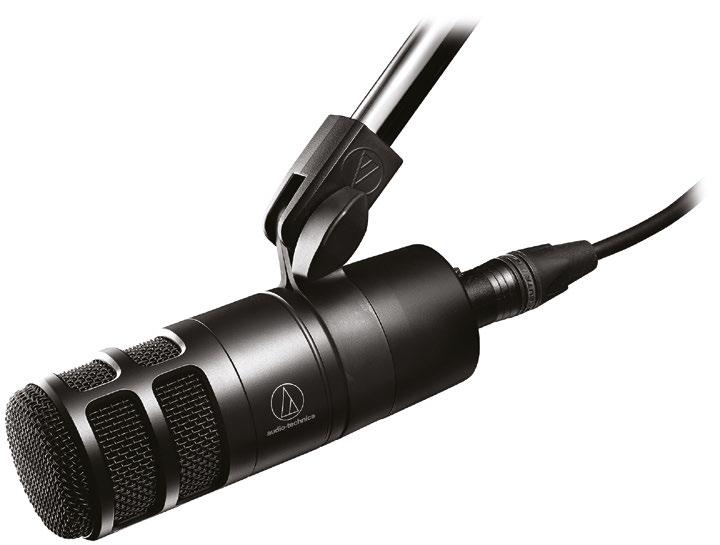
A-T Releases Podcast Mic
Microphone and headphone maker Audio-Technica has a new microphone for podcasters and others, the AT2040.
A release says the aim is to “professional broadcastquality sound to podcasters and other content creators at an accessible price.”
The AT2040 is a hypercardioid dynamic mic for a tight capture pattern in less-thanoptimal situations. It includes an internal pop filter and an integrated shockmount. The housing is metal for durability.
A 5/8-inch-27 to 3/8-inch16 threaded adapter/standmount is side-attached for optimizing arm/ boom-mounting.
The company’s Gary Boss said, “Audio-Technica microphones have been embraced by streamers, YouTubers and other content creators in recent years, but previously we didn’t offer a dynamic hypercardioid microphone so finely-tuned to the needs of podcasters. … the AT2040, with its smooth vocal reproduction and focused pickup will help take your podcast to the next level.”
Info: www.audio-technica.com
Auralex Debuts ProPOD Acoustic Decouplers
Auralex Acoustics is debuting the ProPOD Acoustic Decoupler, intended for use in decoupling monitors and other audio equipment weighing 50 pounds or less.
Earmarked as the first in a new line of planned decouplers, the ProPODs come in packs of four. Each cylindrical stand consists of a powder-coated carbon-steel exoskeleton and a viscoelastic-polymer shock absorber. They are intended to improve the soundstage and presence of a user’s monitor, loudspeaker or subwoofer within the specified weight range.
“We invested significant resources in the development of the ProPOD and are happy that it will help folks hear what their loudspeakers — and other components — actually sound like. The sonic benefits of the ProPOD are not subtle; it definitely removes the veil. We feel that it dramatically outperforms the competition — and at a more agreeable price point,” said Eric Smith, founder and president of Auralex.
The puck-like ProPODs are placed at corners or where need be. The powdercoated steel exoskeleton found on the decouplers is available in two color choices: matte black and pearl white.
Info: www.auralex.com
JVC Pro Video Offers New PTZ Line
For the radio station looking to video creation, JVC Professional Video has announced a new line of PTZ remote operated cameras.
The 4K KY-PZ400NW/NB (pictured) and HD KYPZ200NW/NB provide optimal streaming image quality and performance for remote production over the internet, according to JVC.
They are equipped with NDI|HX and SRT streaming, H.265/H.264/MJPEG encoding and VITC (vertical interval timecode) multicamera synchronization technologies.
Vice President Joe D’Amico said, “This new camera line marks many firsts for us at JVC, including our first PTZ camera to feature 4K streaming as well as our first PTZ with NDI|HX and SRT.”
He said, the JVC PTZ cameras “now offer a highquality, low-latency IP video transmission standard that is ideal for streaming in an ever-evolving media landscape.”
A third camera, HD KY-PZ200W/B, provides a more affordable option for those without a need for NDI HX.
The KY-PZ400N is equipped with a 4K 1/2.5-inch progressive scanning CMOS image sensor and has a wide angle of view and 16x digital zoom.
The KY-PZ200N and KY-PZ200 feature an HD 1/2.8inch progressive CMOS image sensor, as well as 20x optical zoom reaching out to 606.9mm @35mm equivalence. All three have HDMI and 3G-SDI, RJ-45 with PoE, RS232 and RS485 interfaces standard.
The cameras include SRT, HTTP, RTSP, RTMP/ RTMPS and standard protocols along with Network Time Protocol.
The cameras are available in black or white to best match a studio color scheme. They are compatible with JVC’s RM-LP100 remote camera controller, KM-IP6000/4000 live IP production suites and a variety of options from vMix, OBS Studio and NewTek.
Info: http://pro.jvc.com
Quantum2: The do-it-all portable codec
The COVID pandemic has been a turning point in many aspects of our lives, including ways of working, which are evolving in new ways. Prodys, a pioneering manufacturer of audio coding and transmission equipment over IP networks, is aware of this and is working to offer equipment adapted to this new reality.
The Quantum2 W and Quantum2 XL are compact devices capable of encoding, decoding and transmitting audio and video, whose main innovative features are:
•The ability to send and receive video on a separate streaming channel. • • Low latency (less than 0.5 sg). Compatibility through the implementation of numerous encoding (H264 & H265) and transmission protocols (SRT, MPEG-TS, RTMP & BRAVE). • Streaming forwarding, which allows the sending of comments and video directly to the cloud.
These features make Quantum2 codecs the first equipment on the market designed to work in the following scenarios:

Remote commentators
Whether the work is done at home or in offices far from the event venue, Quantum2 equipment allows the reception of live images from video encoders in remote locations (venue, production centre, etc.) for use by commentators. The video can be encoded in either H.264 or H.265. In the case of using Ikusnet as a video source, the video can be transmitted using bonding techniques to aggregate the bandwidth of several IP interfaces, fixed or LTE, and obtain perfect transmission quality with high bandwidth.
Apart from connecting to video encoders, Quantum2 can also connect to web servers in the cloud for receiving images using SRT or RTMP protocol.
A novel way of working consists of inserting audio commentary into the received video and forwarding the whole program (audio plus video) to its final destination. In this way, a commentator can work away from the event, receive the encoded video, insert his comments into the program perfectly synchronised with the image and send the whole to the studio for broadcasting.
TV commentators at international events
Although the video image of the event is provided by a separate operator, it is common for the commentators to travel to the event site to add immediacy to the narration. With Quantum2 it is possible to have not only the audio commentary but also images of the commentators doing their job (presentations, interviews...) so that they can be mixed in the studio and enrich the program with personalised content.
Visual radio outdoors
More and more radio studios are equipped with video systems capturing and sharing images via web or social media. However, this video infrastructure is not easy to take out of the studio. Now, with Quantum2, it is possible to have everything necessary for the transmission of audio and video program with a minimum investment in equipment. In addition to those mentioned above, the new video functions open up new applications beyond remote commentary, such as dubbing or simultaneous translation. Besides, the renewed hardware will allow them to continue to grow in standards and applications in the future.
This set of new functionalities rounds off equipment that already stood out from the rest due to its great connection possibilities (LTE/5G, Wi-Fi, Ethernet), sound quality and ease of control, both locally and remotely from the studio, now including the possibility of monitoring the video as well.
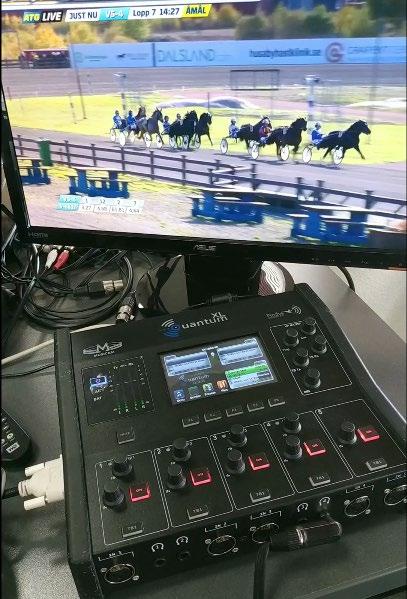

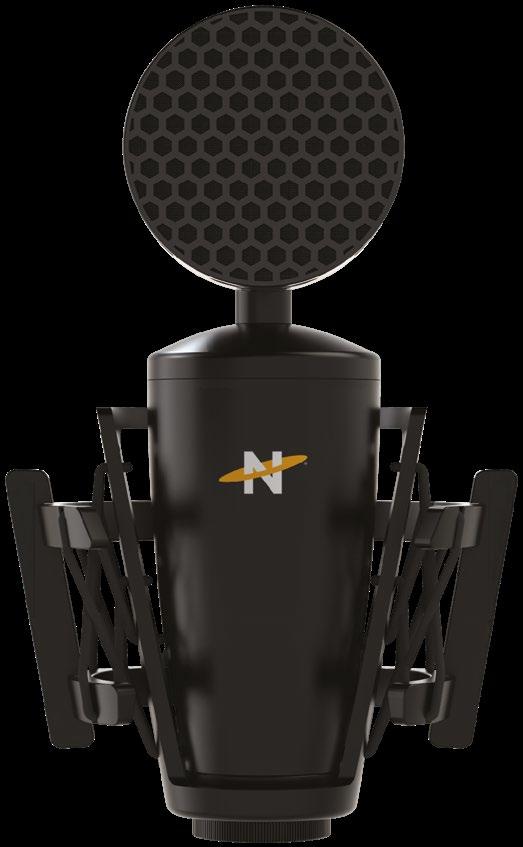
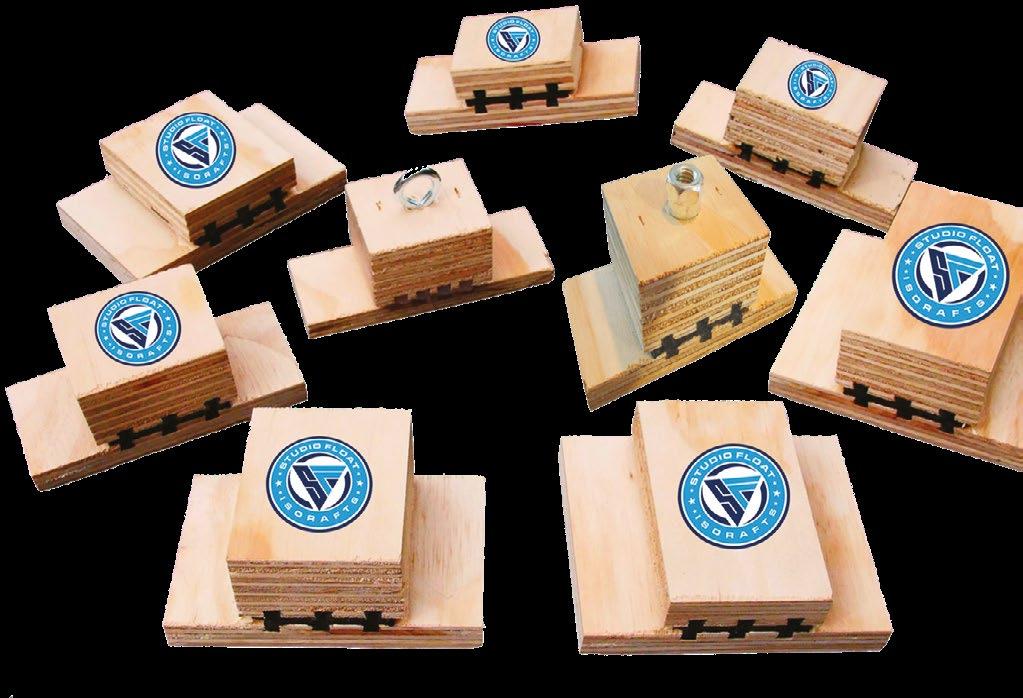
RME Fires up Fireface UCX II USB Audio Interface
RME has debuted the Fireface UCX II, a USB audio interface featuring 40 I/O channels in a compact half-rack size.
The unit offers up to 20 recording and 20 playback channels, SteadyClock FS, built-in parametric EQ, USB direct recording and full standalone functionality.
The Fireface UCX II houses two mic/line preamps in XLR combo configuration on the front, along with two digitally controlled line/ instrument inputs, followed by a headphone jack, various control buttons, a display and the main volume knob.
At the rear is a set of 10 analog balanced line inputs and outputs, MIDI I/O, ADAT I/O, AES/EBU and S/PDIF I/O, USB 2.0 as well as a switchable Word Clock I/O.
The onboard digital DURec (Direct USB Recording) functionality allows any input or output of the Fireface UCX II to be recorded directly to a USB storage device. This means DURec uses the integrated DSP, which provides standalone operation without the need for a computer.
SteadyClock FS on the unit is the latest clock and jitter rejection technology from RME. Based on a femtosecond clock, SteadyClock FS reduces jitter when converting from and to analog over digital formats.
The unit comes with the TotalMix FX DSP mixer offering routing and monitoring options, as well as the DIGICheck analyzer allowing it to measure and analyze the digital data feed in both directions.
Info: www.rme-usa.com and U.S. distributor www.synthax.com
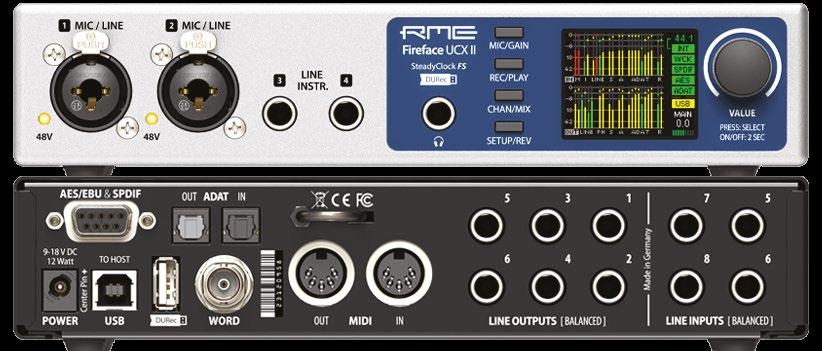
Neat King Bee II Takes Flight
If the unusual design of the King Bee II makes one think about Blue, that’s not a coincidence.
The group that founded Blue — Baltic Latvian Universal Electronics — and built it into a major microphone player are behind Neat Microphones, maker of the King Bee II and the original King Bee along with other XLR mics and many USB mics. The designs put out by Neat have been eye-catching. Neat was recently acquired by iconic computer sound card pioneer now computer gaming peripherals power Turtle Beach. King Bee II is a cardioid large diaphragm condenser aiming to be a studio mic rather than a computer peripheral. This mic has an XLR output and, the company says, was designed with quality electronics. Its target users include electric guitar, acoustic instruments and drums along with voiceovers, podcasting and streaming content.
It ships with the custom “Beekeeper” shockmount and “Honeycomb” pop filter.
Info: www.neatmic.com
Studio Float Launches IsoRafts
Studio Float is offering IsoRafts, a line of wood and silicone vibration isolation products.
Intended to be an inexpensive sound-absorbing solution, the line is centered around simple “blocks” constructed from wood and silicone, which the company says provide accurate predictive acoustic performance.
The line is geared towards studio designers and builders of private or commercial production/performance venue projects.
According to Studio Float, IsoRafts make a space more acoustically efficient and prevent sound from leaking into adjacent areas.
During a facility’s construction, the IsoRafts are attached to the side of studs and joists using standard fastening techniques. The aim is to decouple floors, walls and ceilings from a main structure, “floating” them and preventing sound transfer between spaces.
Three types are available: Deck IsoRafts (for floors) are available in three sizes (2-inch, 3-inch, 4-inch) and height options of low 1-1/4-inch height profile or high 2-1/4-inch profile for handling underfloor cabling. Meanwhile, Wall IsoRafts feature a 1/4-inch offset to provide an air gap, and Ceiling IsoRafts are available for use with hanging acoustical panels or with a threaded rod insert. The Wall IsoRaft may also be use in a ceiling application.
These products are built in Hanover, Mass., and tested at Riverlab Acoustical Laboratories in Illinois.
Info: https://studio-float. com
Black Lion Audio Has PG-P Portable Power Conditioner
The PG-P Portable Power Conditioner from Black Lion Audio is built around its PG-P portable filtering technology. The firm says the aim is to provide the same level of noise filtering as found in rack-mount power conditioners. The conditioner is built using Panasonic capacitors to help eliminate high-frequency noise. It provides studio-grade power-on-the-go via six wall-wart-spaced outlets, as well as LEDs for Ground OK, Protection On and Clean Power On.
The unit comes on the heels of the PG-2, a pro power conditioner that offers a 120 V Power Grid of 14 outlets in a 2U rack-mountable chassis.
The PG-2 uses proprietary PG-99 Filtering Technology, with a suite of status and alert capabilities. Black Lion says the unit provides an average of 99.7% of noise filtering.
The power conditioner features Panasonic and Wimi capacitors, and offers filtration with a reported power absorption rating of 2,775 joules. Also, the PG-2 features a bank of 12 switched, filtered, and surge-protected outlets on its back panel arranged as three groups — four digital audio outlets, four analog audio outlets and four high current outlets.
Info: www.blacklionaudio.com
KRK Adds to Speaker Line
Speaker Specialist KRK announced the addition of two monitors to its Classic line. The Classic 7 and Classic 8 (pictured) join smaller sibling Classic 5.
The new monitors match the Classic 5 in most features — biamplified with A/B amplifiers, 1-inch soft dome tweeters, bass boost, high- and lowfrequency controls, passive front-firing bass port, XLR, 1/4-inch and RCA connections.
The nominal difference between the two is the 7- and 8-inch KRK yellow glass aramid fiber woofers, respectively. The Classic 7 uses a 48W woofer amplifier and a 25W tweeter amp while the Classic 8 uses a 75W bass amp with the 25W tweeter amplifier.
Info: www.krkmusic.com
27
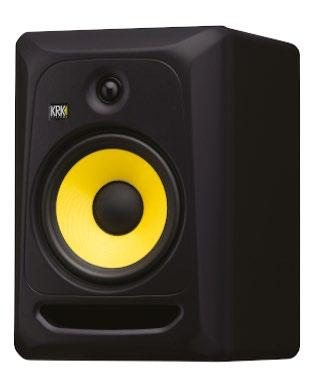

Omnirax Broadcast Intros Work From Home Line
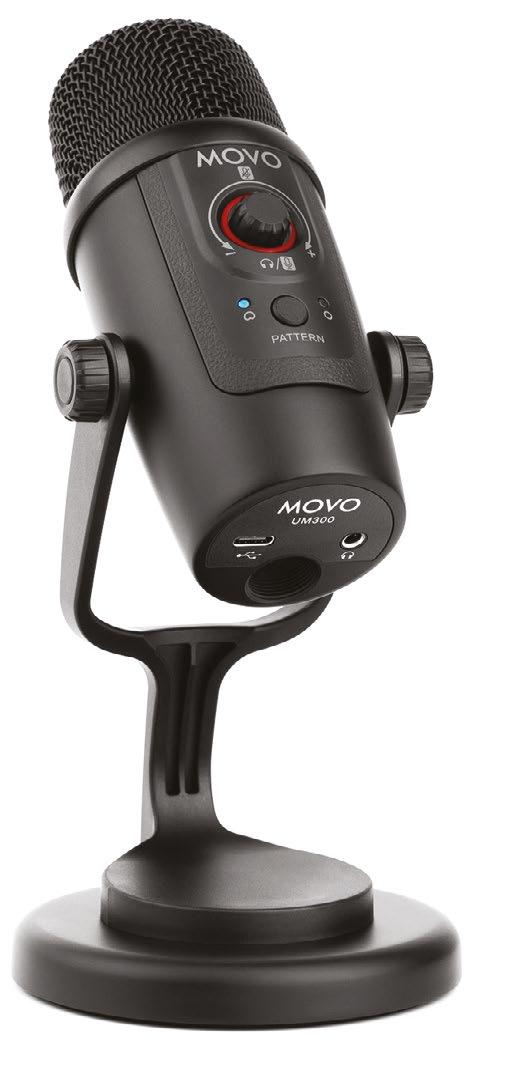
With widespread acceptance that work from home is here to stay for at least some broadcast talent and staff, Omnirax has designed a line of compact models that fit in smaller spaces. The company says these economical, ergonomic, purpose-built Work From Home furniture solutions will help workers become healthier, happier and more effective. Two models, available in three base options (sitting, standing, motorized adjustable height), two configurations (with or without four-space rack) and three color schemes make this a customizable option for a variety of broadcast applications.
Pictured is model WFH2-AH, motorized, adjustable height in pumice with optional EchoScape Screens.
Info: https://omnirax.com
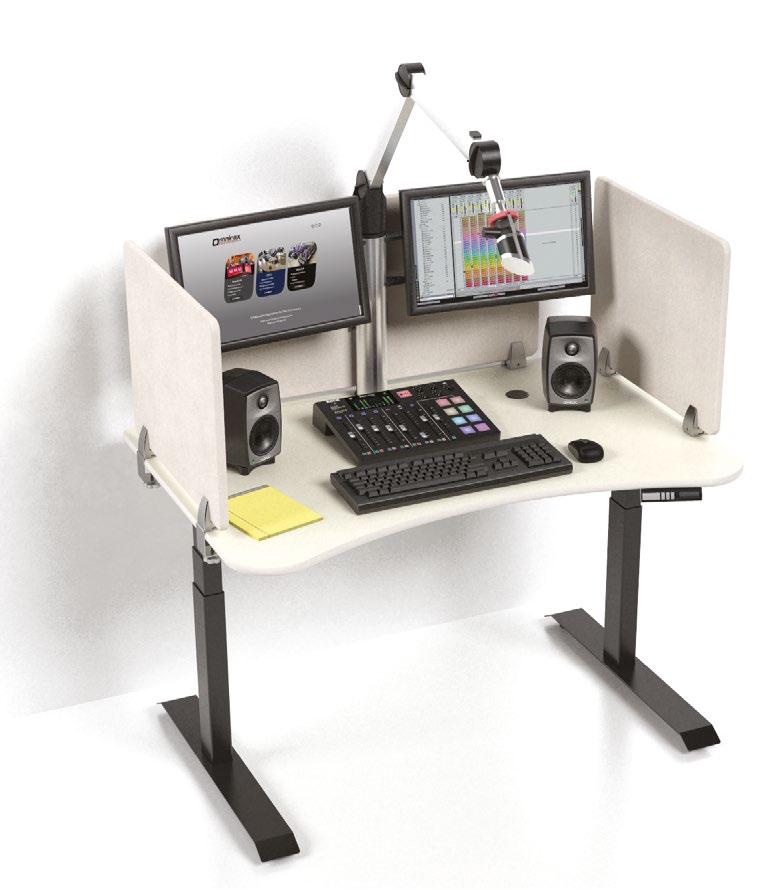
Movo Ships Another Microphone
Movo continues its surge into the audio equipment market with another microphone, a versatile USB desktop and smartphone mic, the UM300.
According to the company, the UM300’s three-capsule array captures 48 kHz/16-bit broadcast quality sound resolution. It offers cardioid and omnidirectional patterns.
A single knob controls gain, headphone level and muting. It is compatible with Windows, Mac and along with Android smartphones.
Movo CEO Ben Halberstam said, “We noticed the low-quality audio and video that people were experiencing while using their built-in or outdated microphones during the early stages of the COVID-19 pandemic and wanted to provide better solutions that won’t break the bank.”
At an affordable price, it would be easy to stock-up on a few for ENG and remote content production or hand-off to the interns without worrying about losing an “expensive” microphone.
Info: www.movophoto.com
Solid State Logic Adds UF8 DAW Controller
Solid State Logic has introduced a digital audio workstation control surface, the UF8. It provides remote access to hardware faders, encoders and high-resolution color displays. It’s primarily intended for use in music creation, production and mixing, postproduction and webcasting.
The UF8 is expandable to a 32-channel control surface and offers integration for all major DAW platforms. SSL’s 360° control software (Mac and Windowscompatible) manages multiple controller configurations, customized user keys, and DAW switching across multiple layers, allowing for switching between numerous sessions.
The unit offers 100 mm touch-sensitive faders; highresolution color displays; eight “endless” rotary encoders; creation and use of custom workflows via five banks of eight programmable user keys and three quick keys, adding up to 43 assignable keys per UF8; an intelligent multipurpose channel encoder; mouse scroll emulation, providing control of any plug-in parameter that is hovered over; the ability to switch control between three simultaneously connected DAWs; the ability to chain up to four UF8s together for a total of 32 channels of control; and a pair of SSL plug-in: SSL Native Vocalstrip 2 and Drumstrip.
Info: www.solidstatelogic.com
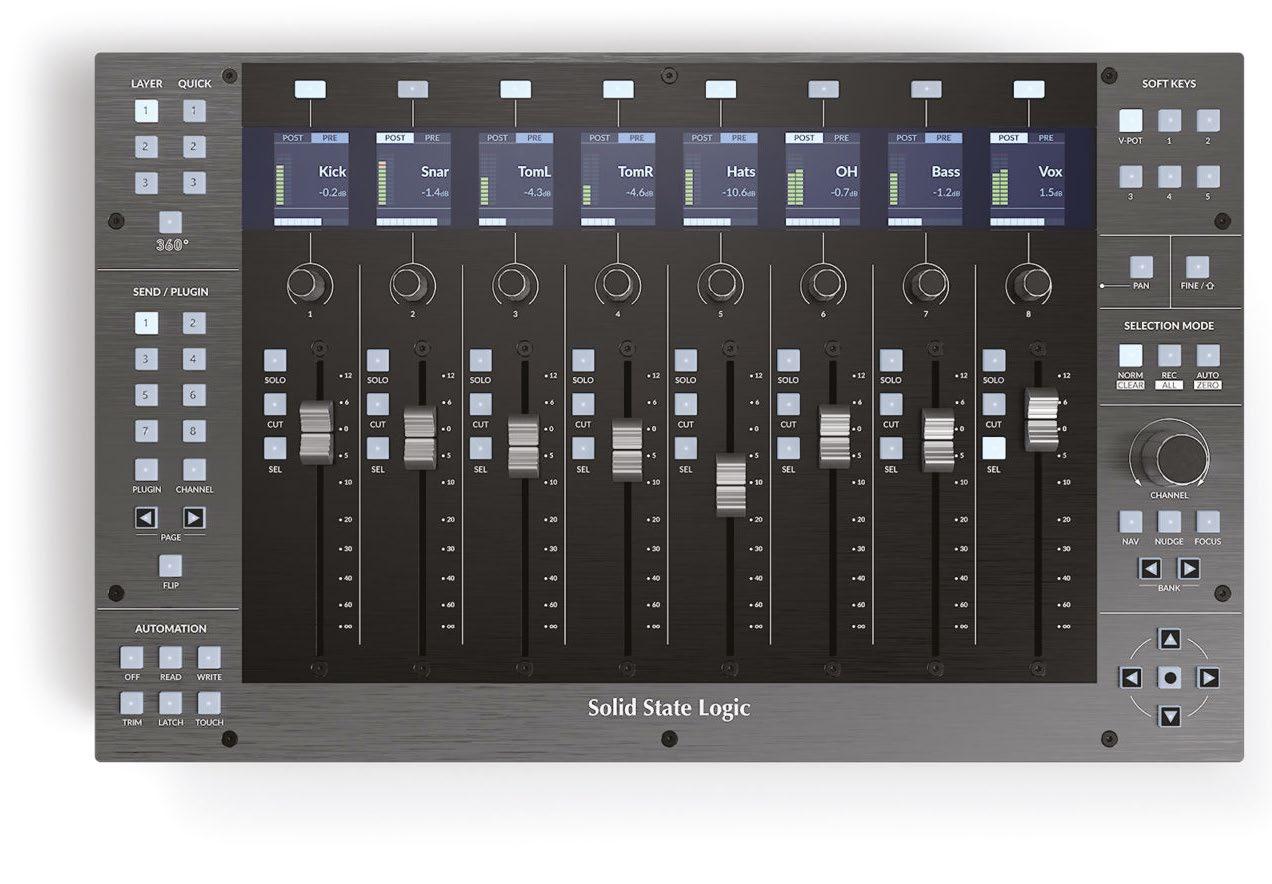
Adthos Ad-Server Is Free Ad-Serving App for Radio
Adthos introduced what it calls “the only free ad-serving technology built specifically for radio.” Adthos Ad-Server is an ad sales application that replaces playout of ads by an existing automation system, allowing digital audio and radio “to be sold seamlessly within a single integrated campaign.”
The company said the accompanying “integrations” provide users more flexibility; replace audio live and quickly without having to take multiple actions; and send reconciliation back to the user’s traffic system. The system also can facilitate local insertion on boosters and translators, and integrate workflows between the user’s digital and broadcast products. Its streaming encoder encodes streams in AAC, HE-AAC and MP3, and is compatible with major streaming servers.
The platform is free to stations, and Adthos says further releases are planned.
Info: www.adthos.com
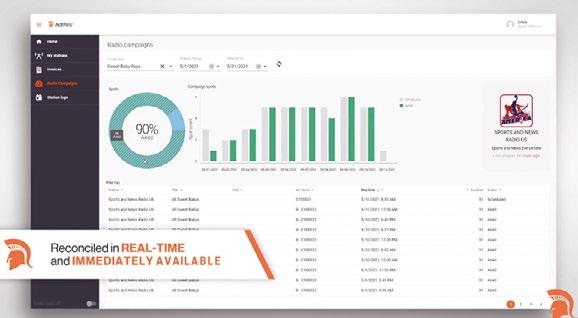
H&A Unveils AC50 Studio Broadcast Microphone
H&A has unveiled the AC50 Studio Broadcast Microphone, for use on podcasts, broadcast, studio, vocals, narration, fish pole use and instrumentals.
Featuring a cardioid pattern, the mic is topaddress, eschewing off-axis noise, making it appropriate for broadcasting, podcasting or vocal performances. Inside the mic, along with the mesh shielding, the internal pop filter helps eliminate distortion and allows for instant control of plosives when talking close to the microphone.
A low-cut filter switch allows users to reduce low frequencies by –10 dB in order to maintain an overall flat frequency response when needed. The microphone features a shielded all–aluminum construction. With a dynamic capsule, it does not need phantom power.
The microphone ships with a mic clip, a standard mount adapter and a molded ABS protective case lined with impact-resistant foam for storage and transportation.
Info: www.adorama.com
29
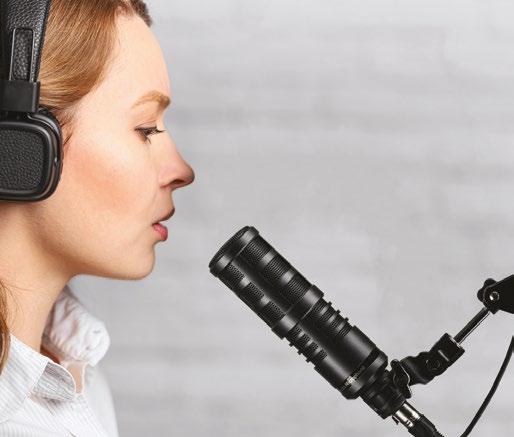
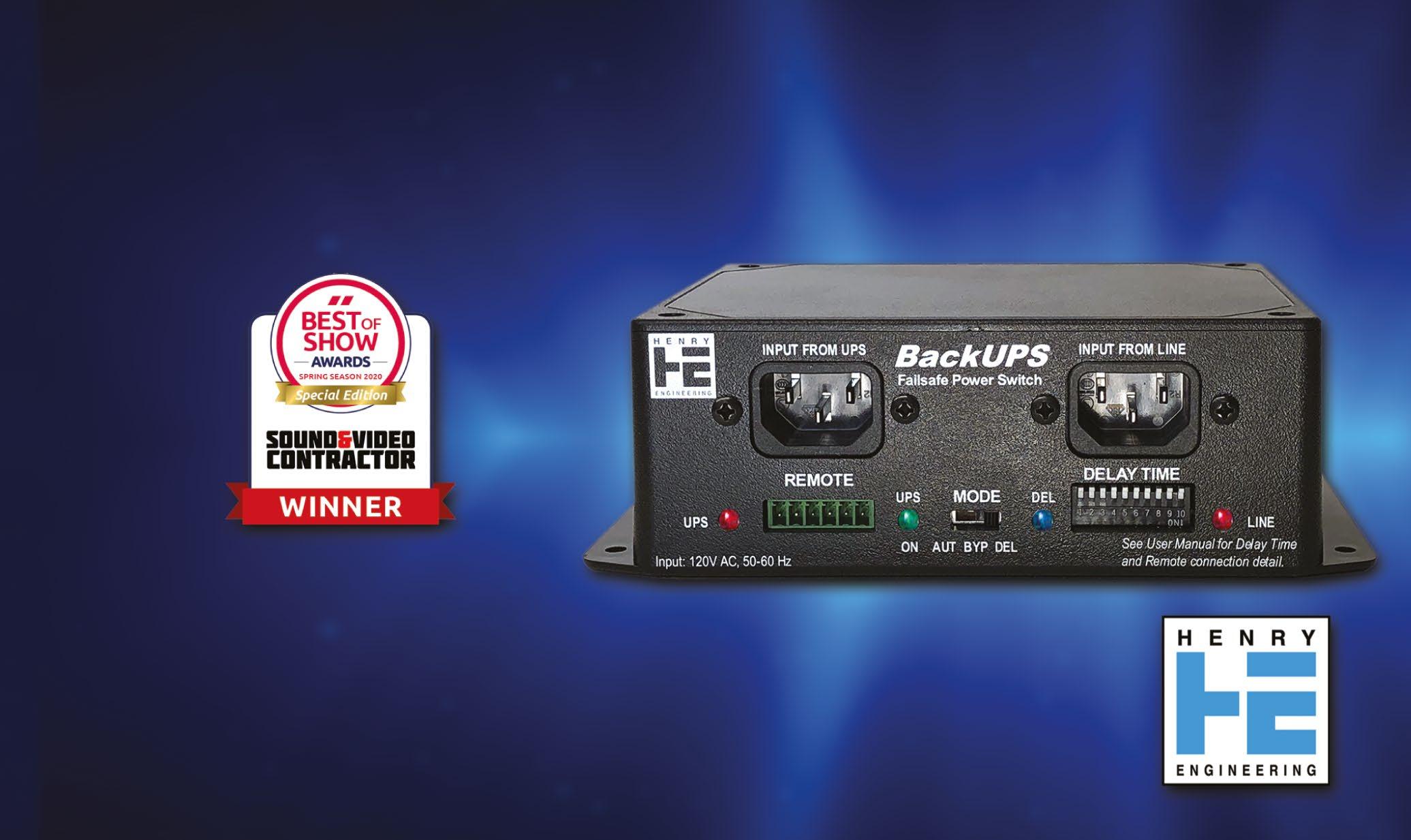
Monoprice Launches Stage Right Podcasting Bundle
Monoprice offers an expanded podcasting/ streaming bundle centered around its Stage Right microphone. Augmented with an accessories package, the bundle is intended for entry-level use.
The Stage Right Complete Podcasting and Streaming Bundle includes a USB condenser mic, a pair of headphones, a mic stand and other accessories. The headphones can be plugged into the USB microphone’s headphone jack so users can monitor without the need for additional hardware.
The headphone volume level can be adjusted independently of the microphone output level using the headphone volume knob on the mic.
The USB condenser microphone itself features a 16-bit/48 kHz sampling rate, and comes with a broadcast-style mic boom, pop filter, mic clip, mount bracket and windscreen.
Info: www.monoprice.com

Avantone Pro Introduces Gauss 7 Studio Monitors
Avantone Pro offers Gauss 7, an active fullrange, two-way reference monitor that aims to evoke a vintage sound from modern designs.
Cetex Gauss was known for its tape duplication equipment, but its shortlived speaker brand of the early 1970s is being used as a jumping-off point for the new line.
The Gauss 7 features a 2.5-inch (65 mm) GAU-AMT aluminum-etched PET (polyethylene terephthalate) film-folded membrane highfrequency driver that offers a response up to 22 kHz. The assembly is mounted in its own enclosure to avoid back wave pressure from the woofer. Woofer-wise, the Gauss 7 includes a 7-inch (178 mm) ferrite motor GAU-7MLF low-frequency driver. It draws from Avantone Pro’s AV10-MLF “white cone” construction. The woofer cone is a pressed design, fabricated from the same blend of wood pulp and glass fiber found in the AV10-MLF woofer, but with increased materials providing extended low end. The woofer’s motor structure is made of lowcarbon 1008 steel.
The rear-firing passive bass port gives the Gauss 7 a “controlled yet punchy low end with a tight response,” the company said.
On the power front, there is a 120 W power amplifier for the low-frequency driver and 60 W high-frequency driver amplifier power. Specs include 103 dB (peak) SPL; and 0.5% THL delivered from an enclosure measuring 381 mm (15 inches) H x 235 mm (9.25 inches) W x 212 mm (8.35 inches) D. Weight is 18 pounds.
It also includes balanced XLR and 1/4-inch TRS inputs, plus a three-position “acoustic placement” switch, a three-position high trim switch and a gain control.
Info: www.avantonepro.com
Jutel RadioMan Gets New Architecture
Jutel is highlighting new technical architecture for its RadioMan platform. Its virtual browser-based radio production and playout system is built in the cloud.
The company said web-native technologies and architecture enable flexible deployment models. “RadioMan users can move freely between different locations, as laptops and tablets are used as a thin clients to access RadioMan virtually through a web browser,” it states.
The system can deploy in a cloud environment, on physical hardware or as a hybrid.
“Every radio station can benefit from taking out expensive on-site hardware and moving to virtual environments, especially small, pop-up, temporary and web-only radio stations. Instead of having expensive on-site infrastructure throughout many locations, RadioMan allows for the infrastructure to move to one centralized location,” it states.
“However, RadioMan’s built-in load balancer allows the user to redirect HTTP traffic across the load-balanced back-end infrastructure. The back end itself is run on Apache web servers and the messaging between the front and back-end infrastructure is controlled via web-native ActiveMQ messaging.”
The company deployed PostgreSQL database with RadioMan 6 to make it more affordable and easier to deploy.
The HTML interface runs inside the RadioMan deployment and there is no need for third-party plug-ins. The REST API allows a user to build interactivity so that MAM, traffic and newsroom systems can be integrated with RadioMan.
Info: www.jutel.fi
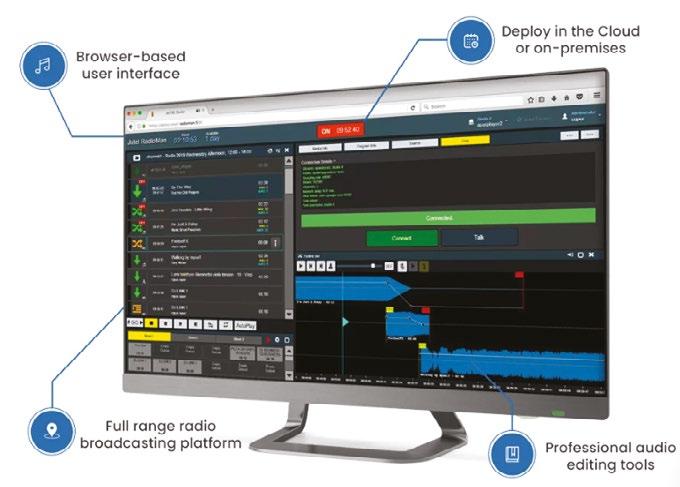
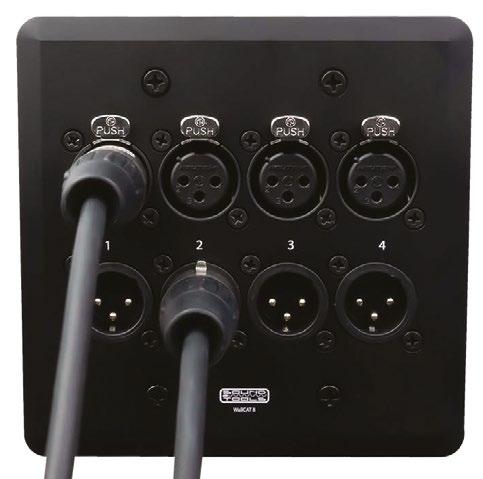
iCON Pro Audio Debuts Duo44 Live USB Audio Interface
iCON Pro Audio released its Duo44 Live portable/ desktop recording interface, intended for podcasting, home recording and live streaming applications.
The Duo44 Live is a four-input/four-output USB recording interface allowing full-duplex simultaneous recording and playback. There are dual mic/instrument preamps accessed via front-panel combi connectors alongside potentiometers to control the input level of each of the associated analog microphone/instrument inputs, while the rear panel also includes MIDI I/O.
A master level potentiometer is available on the front panel, while the topside-sited monitor knob allows for direct monitoring when turned clockwise and “computer” monitoring (complete with effects while recording by using low-latency ASIO monitoring) when turned anticlockwise. The unit sports D/A-A/D converters delivering 114 dB dynamic range and provides 24-bit/192 kHz conversions.
Info: https://iconproaudio.com
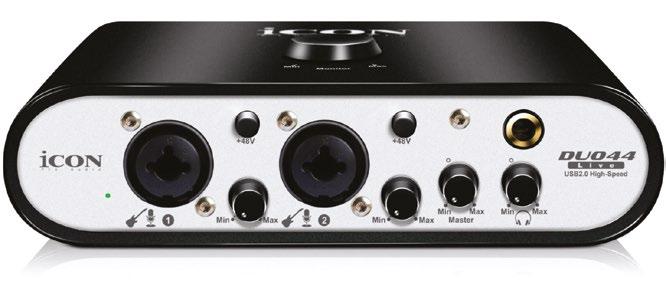
SoundTools Highlights WallCAT 8 Wall Plate
Interconnects hardware manufacturer SoundTools offers the WallCAT 8, a twogang wall plate with four female and four male XLR connectors.
The plate uses eight connectors, allowing the choice of either input or output across four XLR channels. A pair of RJ-45 connections in the back of the plate transmit analog audio, AES3, DMX and interCOM signals to multiple locations with a Cat-5e, Cat-6, or Cat-7 cable. All connectors on the WallCAT 8 come preinstalled — ready to go without a need for soldering.
Noting that “The WallCAT 4, male and female, have been wonderfully popular products for us,” Dave Rat, designer of SoundTools products, wondered if the company could fit eight connectors on to a standard 4-inch x 4-inch wall box plate, and set out to design it. “The WallCAT 8 is exciting because it allows the same panel to be used as either inputs outputs or any combination,” he says.
Info: www.soundtools.com
31

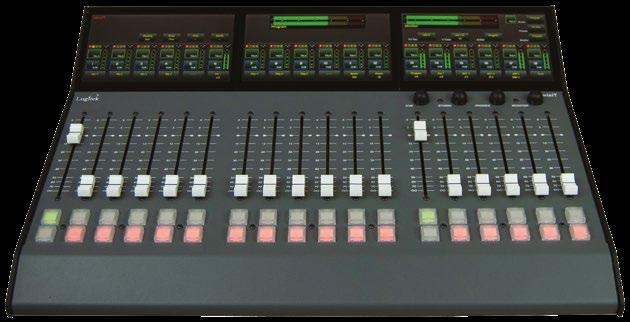
Logitek Mixes Things Up With New mixIT
Logitek says its mixIT-18 brings an affordable AoIP console platform to stations needing extra faders for on-air or production applications, the company says.
This digital touchscreen package includes an 18-fader console and the 1 RU JET67 engine. Its touchscreens provide quick access to metering, source selection, routing, presets, monitor assignments and other console and router functions. Mix-minus is built into every fader so every remote source can have a clean feed no matter where that source is routed on the console. Touchscreen router controls can be used to control feeds to computers, codecs or the air chain; programmable scene selects allow operators to save their favorite fader
configurations for their shows.
Along with 18 faders, the mixIT-18 has 12 mono analog inputs (six stereo), two digital inputs, 16 mono analog outputs (eight stereo), two digital outputs, four mic inputs with phantom power, and a built-in cue speaker.
Networking is via AES67, Ravenna, Livewire and Logitek’s JetNet, allowing interconnection with popular networking platforms; a Dante option is also available. Two Gigabit and two 10/100 Ethernet ports are provided.
Connections to the JET67 AoIP router are made with quick connect terminal blocks; no soldering, punch-downs or specialized crimping tools are needed. GPIO is provided on a DB-15 connector and includes four inputs and eight outputs.
Info: https://logitekaudio.com
Marketron NXT Manages Broadcast Campaigns
Marketron says its NXT is an all-in-one platform that enables broadcasters to increase revenue and amplify existing ad programs by selling third-party digital advertising.
It provides a single software solution for managing integrated broadcast and digital campaigns, “from proposal to profit,” according to the company.
The company notes that radio ad spending has been in a slow, year-over-year decline while digital has grown very rapidly. But it says broadcasters are well positioned to offer integrated campaigns by taking advantage of their strong relationships with local advertisers.
It says workflows have been hindered by proposals built from scratch and insertion orders created in multiple platforms. It says reporting was inadequate for digital tactics, and business offices struggled to create workflows to account for all revenue streams.
It says Marketron NXT streamlines this process and enables an organization to expand its offering to a full, cross-media suite of ad services. NXT consolidates major digital categories into a system that includes capabilities for proposal creation, order entry, execution and reporting, so that sales teams can package products and tactics — airtime, third-party digital display and video ads, nonspot revenue, O&O digital and sponsorships — into one process.
Info: www.marketron.com

AVT Implements DAB EWF Warning Messages
According to AVT, if a disaster occurs, mobile phone networks are quickly overloaded or no longer available. Therefore the public must be informed via another method.
In countries with DAB digital radio systems, DAB offers a robust and well-established transmission network, with battery-powered DAB receivers sufficient for reception. DAB broadcasts are unencrypted, freely available and can reach the entire population.
Furthermore DAB offers native functions for emergency announcements. The EWF Emergency Warning Functionality — a combination of services such as Alarm Announcement, Service Linking, Program Associated Data (PAD) and Non-PAD — enables the broadcast of multimedia and multilingual information.
AVT has supplemented the concept and implemented it in all AVT multiplexers. The EWB (Emergency Warning Break-In) offers, in addition to the EWF functions, a simultaneous replacement of all audio programs by the emergency announcement. This is supported by information texts and warning pictures via the PAD channel (dynamic label, slide show).
A notable advantage is that the EWB procedure is compatible with older DAB receivers, ensuring that listeners are warned. Modern receivers are switched on automatically with EWB and can display helpful information via other data services.
The new AVT Magic DABMUX plus Ensemble Multiplexer supports this function natively. Existing DAB headends can also be extended cost-effectively by a low-cost EWB repeater based on the Magic DABMUX Go.
Info: www.avt-nbg-de

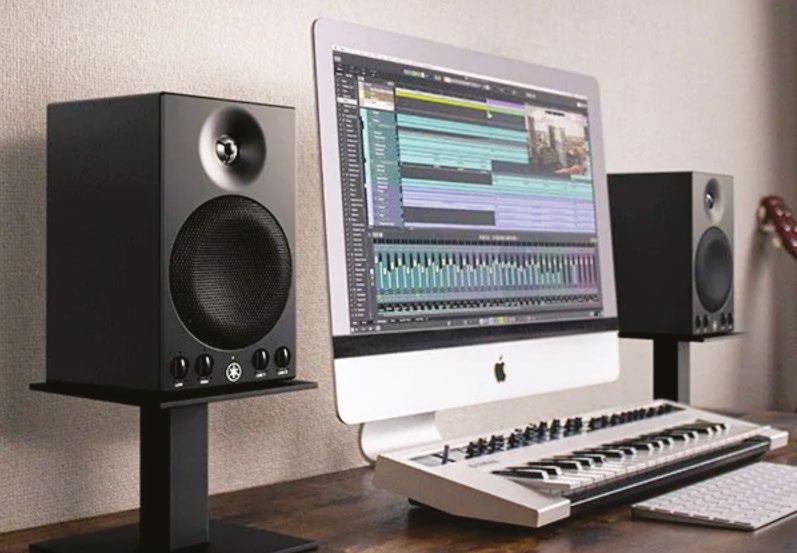

Yamaha Unveils MSP3A Studio Monitor
Yamaha has updated its MSP3 studio monitor with the introduction of the MSP3A powered monitor speaker. Cosmetically, the offering has a similar use of multiple input connectors, controls and compatibility with optional brackets, but Yamaha states the monitor provides higher SPLs, lighter cabinet design and better audio quality — move intended to improve its appropriateness for users whose workflows include content from digital instruments and portable devices.
The MSP3A is the first Yamaha reference monitor to include the company’s Twisted Flare Port technology, intended to provide clearer and tighter low-end frequencies. The technology applies aerodynamic sound analysis and flow visualization measurement to pinpoint and control noise-generating issues. Noisegenerating airflow turbulence at both ends of the speaker port is reduced by changing how the port widens from input to output, adding a twist to it.
According to Yamaha, suppressing turbulence reduces muddiness, lowering distortion in the low bass region, in turn aiding transition to the full range drivers.
A built-in 22 W power amplifier is optimized for the speaker unit, comprising a 4-inch woofer and a 0.8-inch tweeter. The cabinet weighs just under 8 pounds, improving portability and making it easier to reposition the unit in different room configurations.
Info: https://usa.yamaha.com/products/ proaudio
Tula Microphone Debuts for Podcasting, WFH Use
Audio startup Tula Microphones unveiled its first product. The Tula Mic is a portable USB mic that doubles as a mobile recorder with the added benefit of embedded noise reduction technology.
The stylized microphone targets content creators and work-fromhome professionals.
The Tula Mic includes dedicated cardioid and omnidirectional ECM capsules, Burr-Brown op amps, a Texas Instruments audio codec and a 3.5 mm headphone jack that doubles as an input for a lavalier microphone. Also, the microphone sports 8 GB of internal memory, and a rechargeable battery, enabling up to 14 hours of audio recording on the go.
The Tula records in WAV file format. The mic connects to other devices such as computers via USB-C, and is also compatible with Windows, Mac OS, iOS and Android.
Info: www.tulamics.com
Earthworks Audio Debuts Icon Microphones
Earthworks Audio has introduced its Icon USB and Icon Pro XLR microphones, both for use in podcasting, remote working, streaming and home recording. The condenser-type Icon USB offers a frequency response of 20 Hz to 20 kHz, used a cardioid polar pattern and can take on up to 132 dB. Meanwhile, the phantom-powered Icon Pro expands on those specs with a frequency response of 20 Hz to 30 kHz and a maximum acoustic input of 139 dB. Both versions weigh 1.5 pounds.
Designed with an eye towards providing visual flair for those who appear on camera with their mics, the Icon series mics are made of stainless steel. Earthworks partnered with Triad-Orbit to design a custom desktop microphone stand that ships with the Icon mics. The integrated M-2R swivel ball joint can be disconnected and remounted on any studio stand or boom arm.
Info: https://earthworksaudio.com
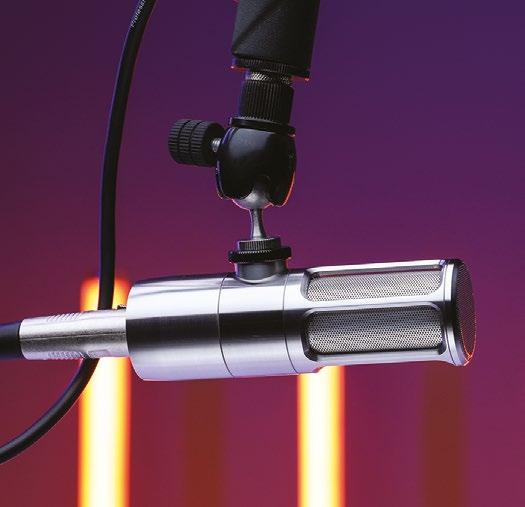
CRL Services Orban Processors
Circuit Research Labs specializes in servicing old Orban processors in addition to selling new ones such as 5500i, 5700i, 8600Si, 8700i LT and 9300.
Service technician Robert Leembruggen takes on 2300, 6200, 8100, 8200, 8300, 8400, 8500, 9100 Optimods.
CRL also carries Orban parts.
Info: www.orbanlegacy.com
Barix Expands Exstreamer Line
Barix’s Exstreamer M400 IP audio decoder is the first in a new generation of Exstreamers for radio applications such as studio-totransmitter and studio-to-studio links as well as remote contribution.
The Exstreamer M400 features stereo, line-level, analog audio output with RCA connections and can decode streams in MP3, AAC-HE, FLAC, PCM, Opus and Ogg Vorbis formats.
AES67 support enables the Exstreamer M400 to be configured as a dedicated AES67 receiver and decoder, enabling integration into AES67-based audio-over-IP networks plus interoperability with Dante-compatible devices. The Exstreamer M400 incorporates the AES67 interoperability guidelines including RTP audio delivery, multicast addressing and PTP-based synchronization with a separate master clock device.
Supported discovery methods include SAP, mDNS and RTSP, enabling the decoder to automatically identify and list available streams from Dante, Ravenna and other AoIP solutions that use these protocols. SDP information can be manually inserted for interoperability with third-party solutions that do not support these standards.
Powered by Barix’s Linux-based IPAM 400 audio module, the Exstreamer M400 features significantly higher processing power than earlier Exstreamer models and a more programmable, software-driven architecture that enables easier expansion, rapid prototyping and greater customization.
A larger buffer size and advanced buffer management technology can be configured to bolster the Exstreamer M400’s resilience to network performance disruptions in applications where minimizing latency is not critical.
Expanded support for IT security standards includes HTTPS: support for audio streams and the web-based management interface, plus secure, encrypted SIP communication links using TLS and SRTP.
Info: www.barix.com
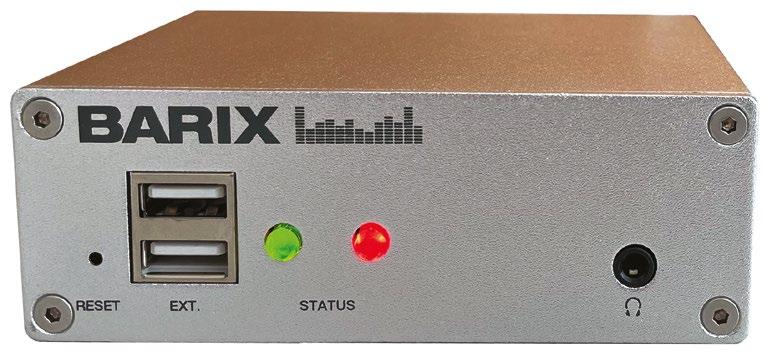

Cranborne Audio Debuts EC1 Preamp
Cranborne Audio has introduced its Camden EC1, a desktop preamp with analog saturation and a headphone amplifier with a discrete line mixer built-in, fit in a half-rack chassis, making it aimed at musicians, engineers, podcasters and voice-over artists.
The EC1’s preamp design provides up to 68.5 dB of gain, allowing the preamp to pair with low-gain dynamic microphones and ribbon mics. Also onboard is a headphone amp with a dedicated line mixer to provide zero-latency monitoring of the preamp mixed with playback from a DAW.
At the turn of a dial, the Camden preamp takes on the persona of vintage transformer or tube-based preamps using its “Mojo” analog saturation control and “thump” and “Cream” styles. Users can split the Hi-Z signal using the link output to record both the DI and a processed amped signal, allowing for re-amping workflows. The unit’s connectivity includes balanced XLR and 1/4-inch impedance-balanced preamp outputs and a 10 dB pad to prevent clipping converters.
VO artists and podcasters can monitor their vocal channel directly using headphones connected to the preamp itself, and apply Mojo analog saturation control to apply different characters to one’s voice — Thump can be used to create a sense of intimacy or Cream to underline excitement. Podcasters will be able to apply 68.5 dB of gain to lowsensitivity microphones, such as a Shure SM7b or EV RE20, reportedly without adding noise or coloration, according to the company.
Info: www.cranborne-audio.com
PromoSuite Introduces Digital Workflow Product
PromoSuite announced a product that it says enables radio stations to manage their digital creative process with customizable workflows.
“PromoSuite Digital allows teams to create, approve and post all digital assets from start to finish, without ever having to leave the platform,” the company stated.
CTO Chris Bungo was quoted saying the offering gives clients the ability to create custom order forms and workflows for each of their digital channels including websites, social media pages and YouTube channels.
It’s described as a collaboration platform that connects members of a digital team who are involved in the process of selling, producing, approving and placing digital assets.
It was developed by a team led by VP, Product Design and Development Rey Mena.
PromoSuite Digital, PromoSuite Production and PromoSuite Promotions are built around the company’s PromoSuitePlus platform. These can function independently but can also work cohesively.
PromoSuite Promotions will complete the PromoSuitePlus platform next year.
Info: https:// promosuite.com
